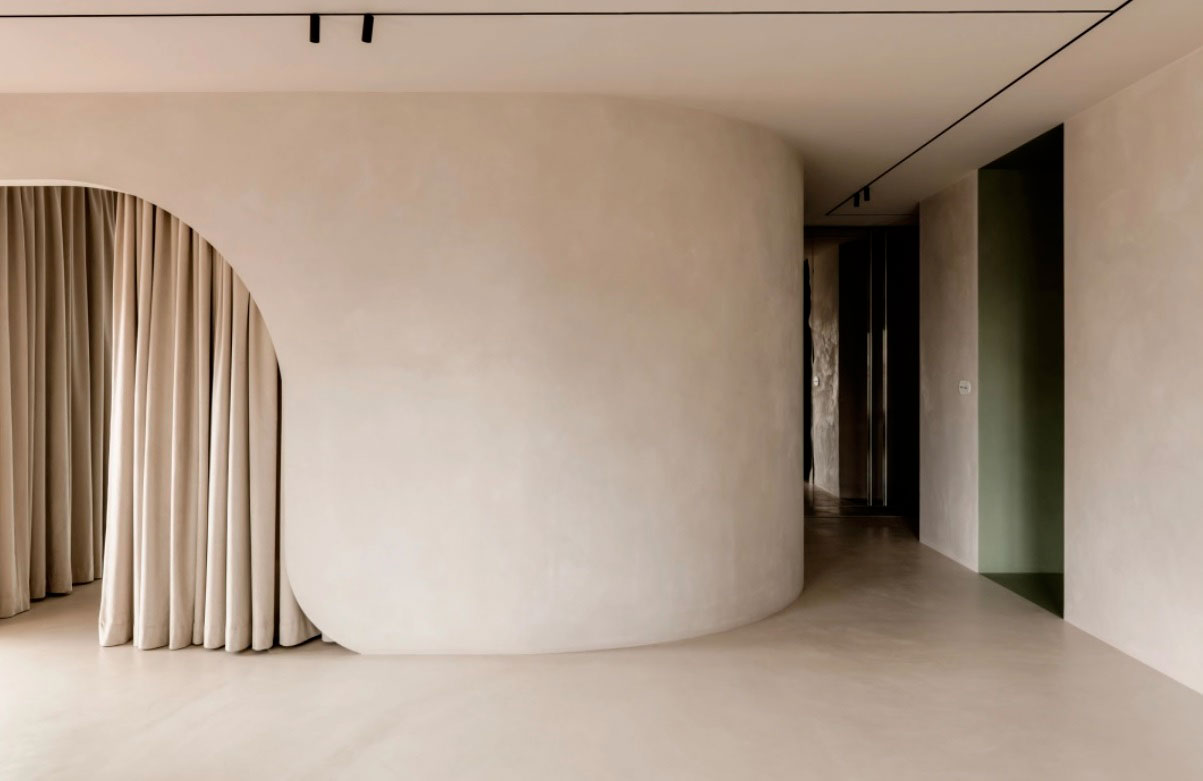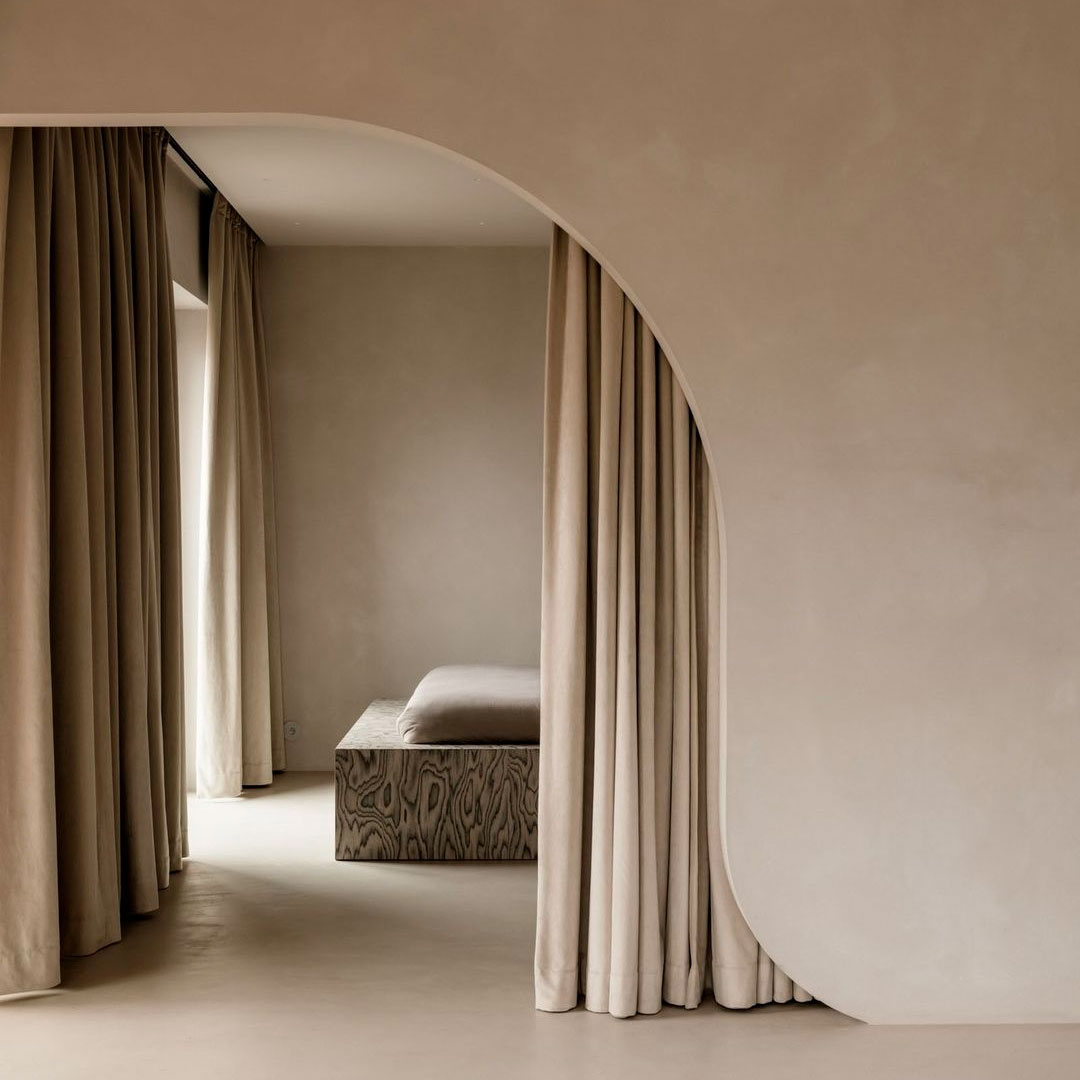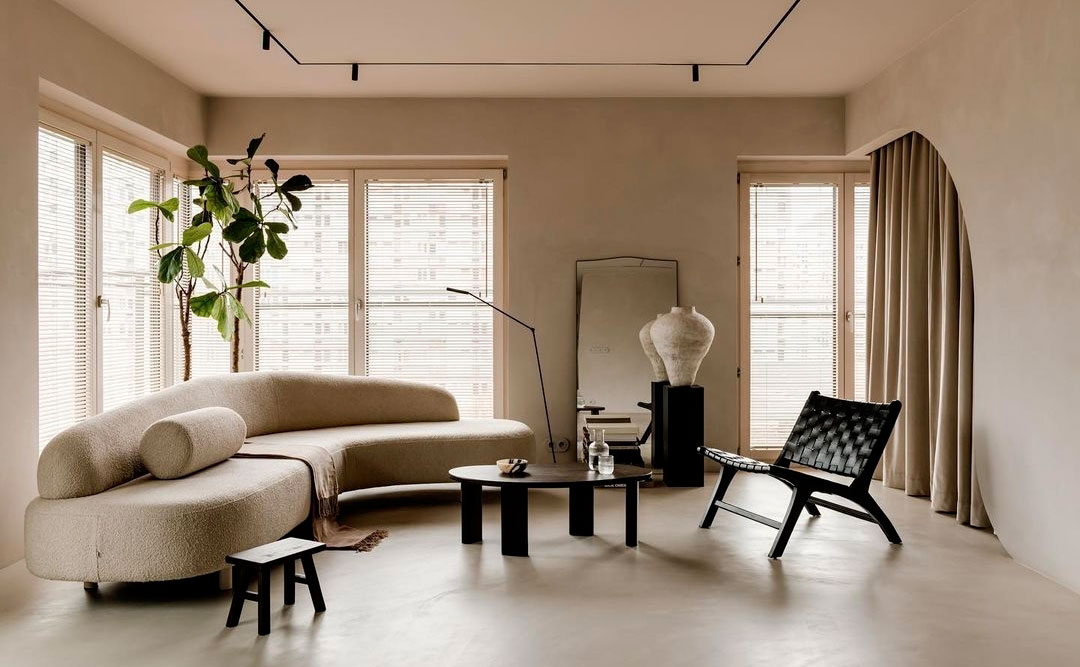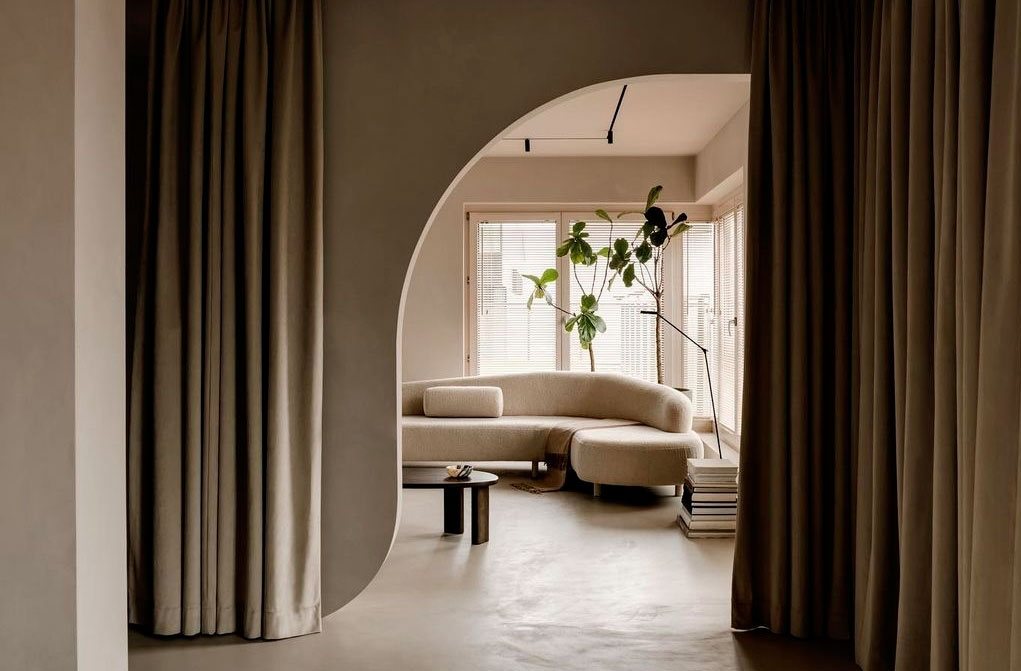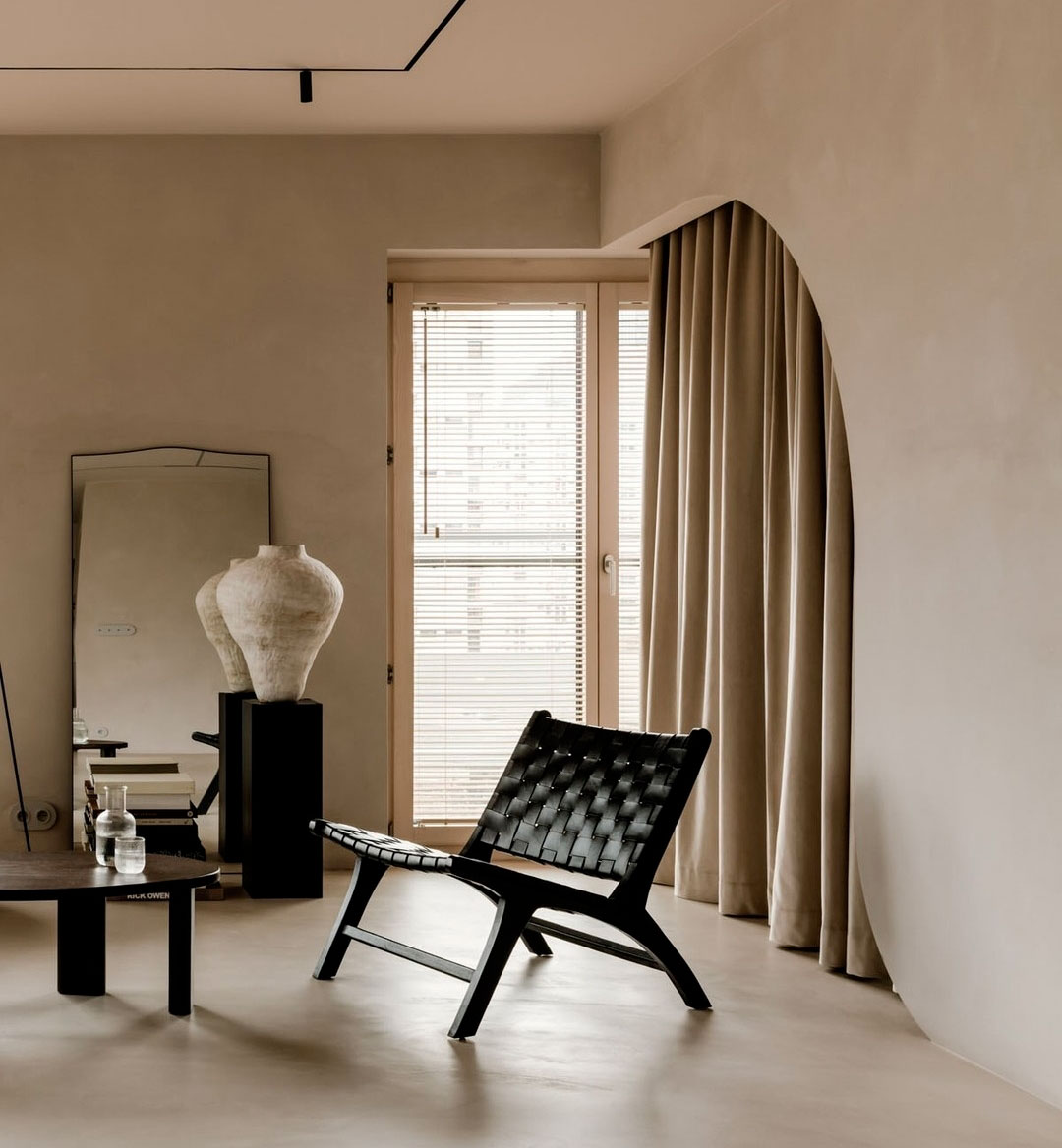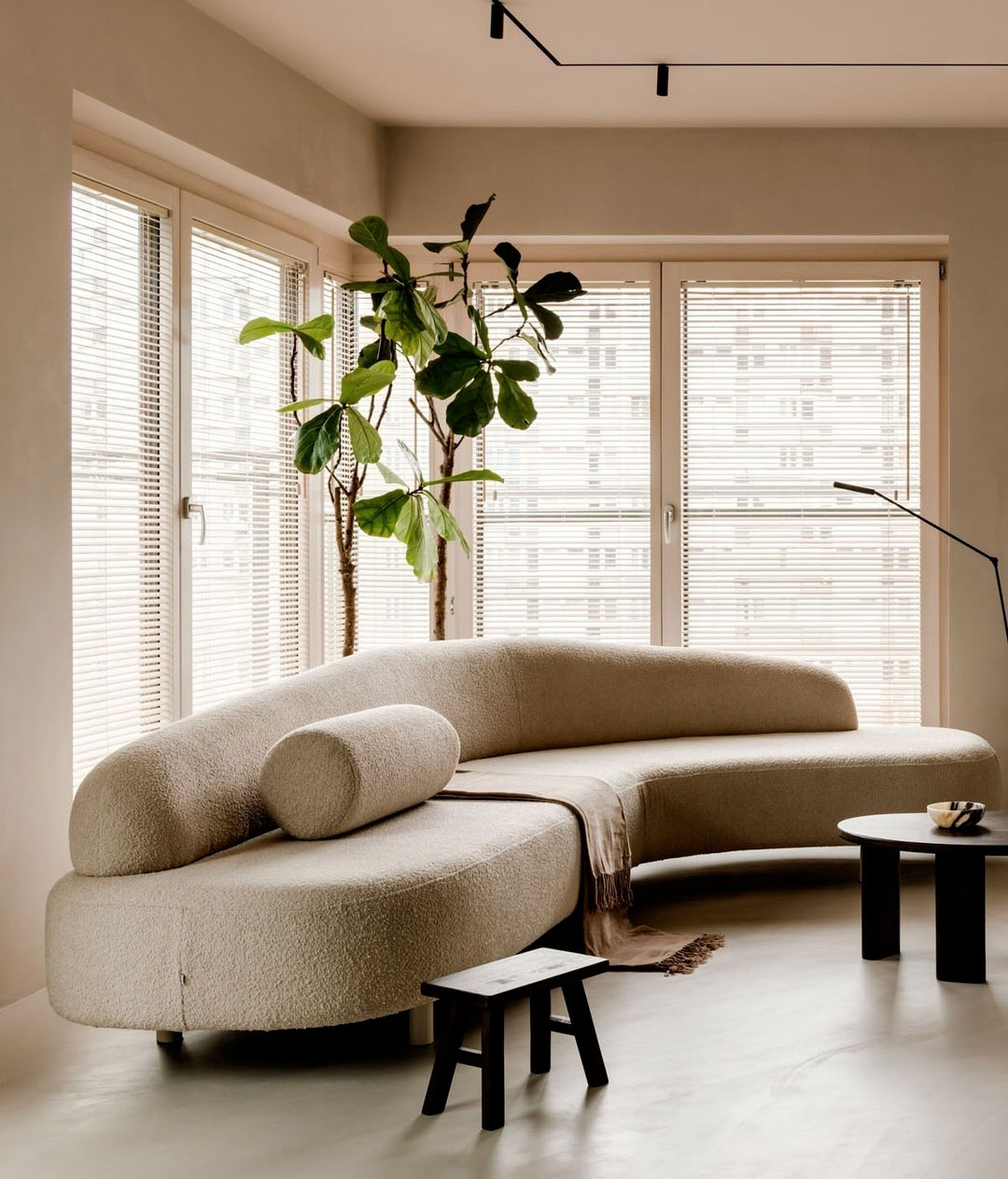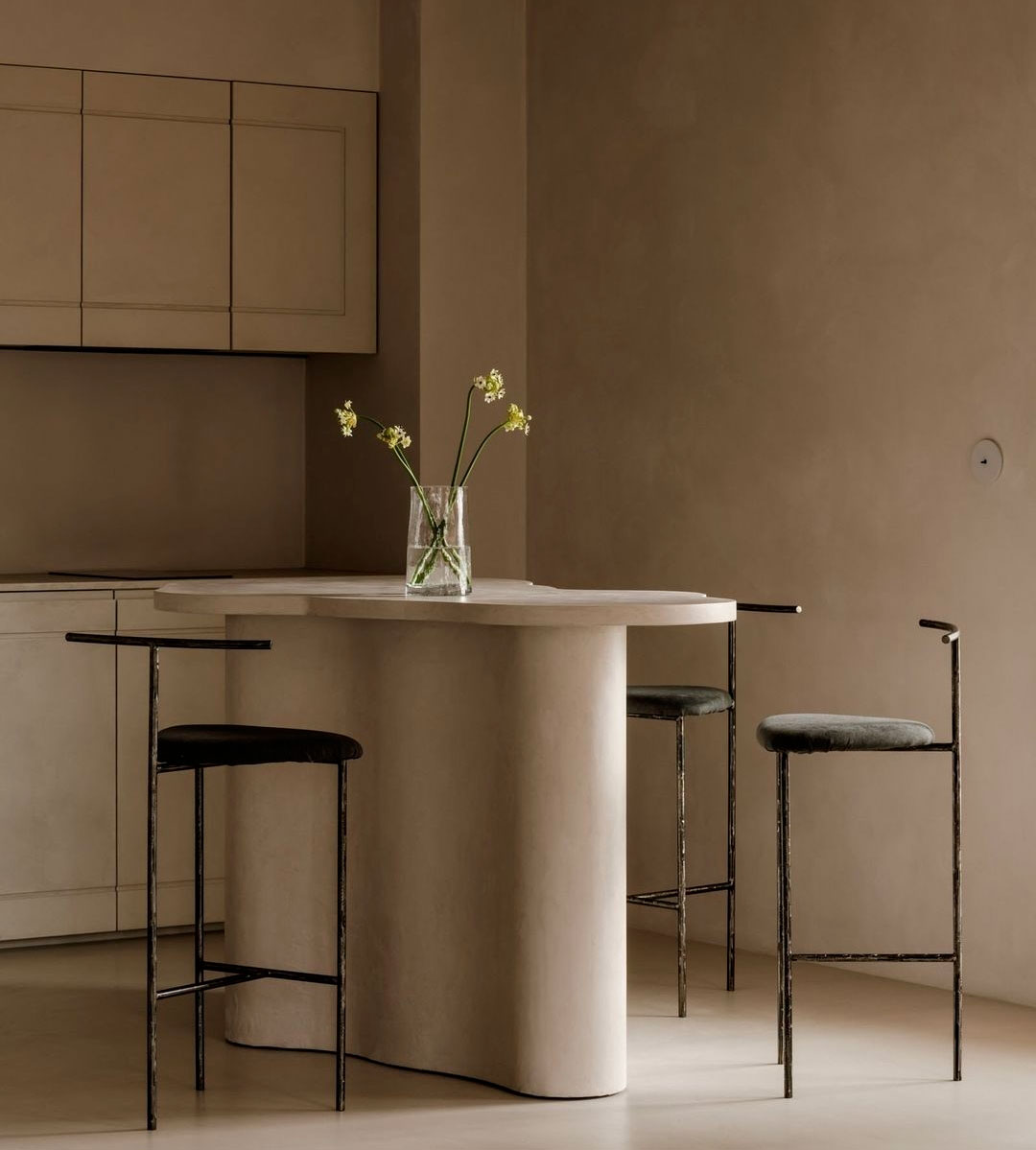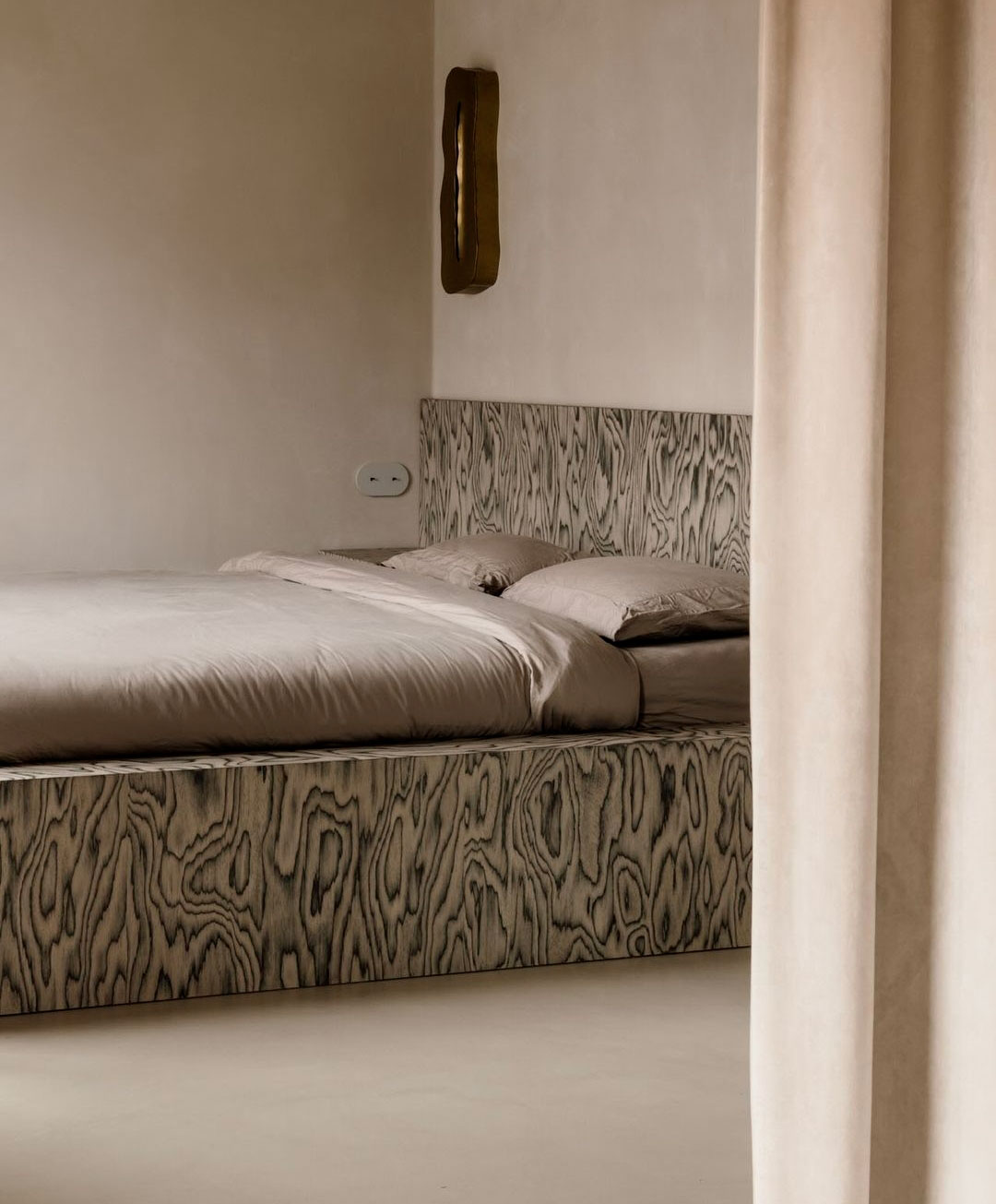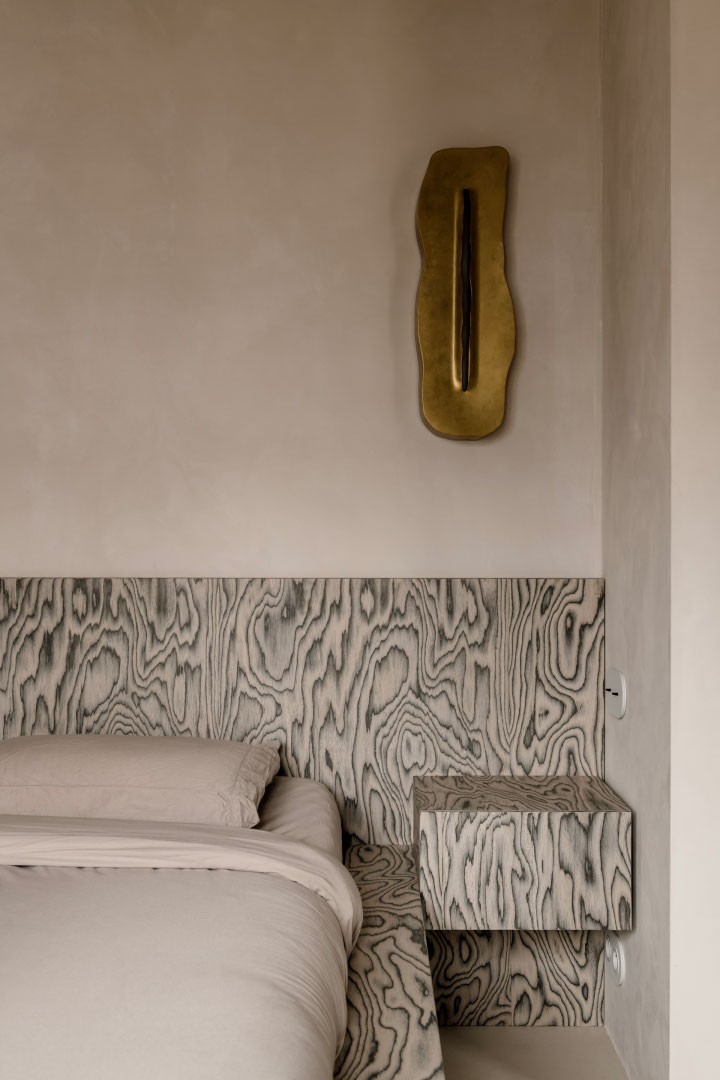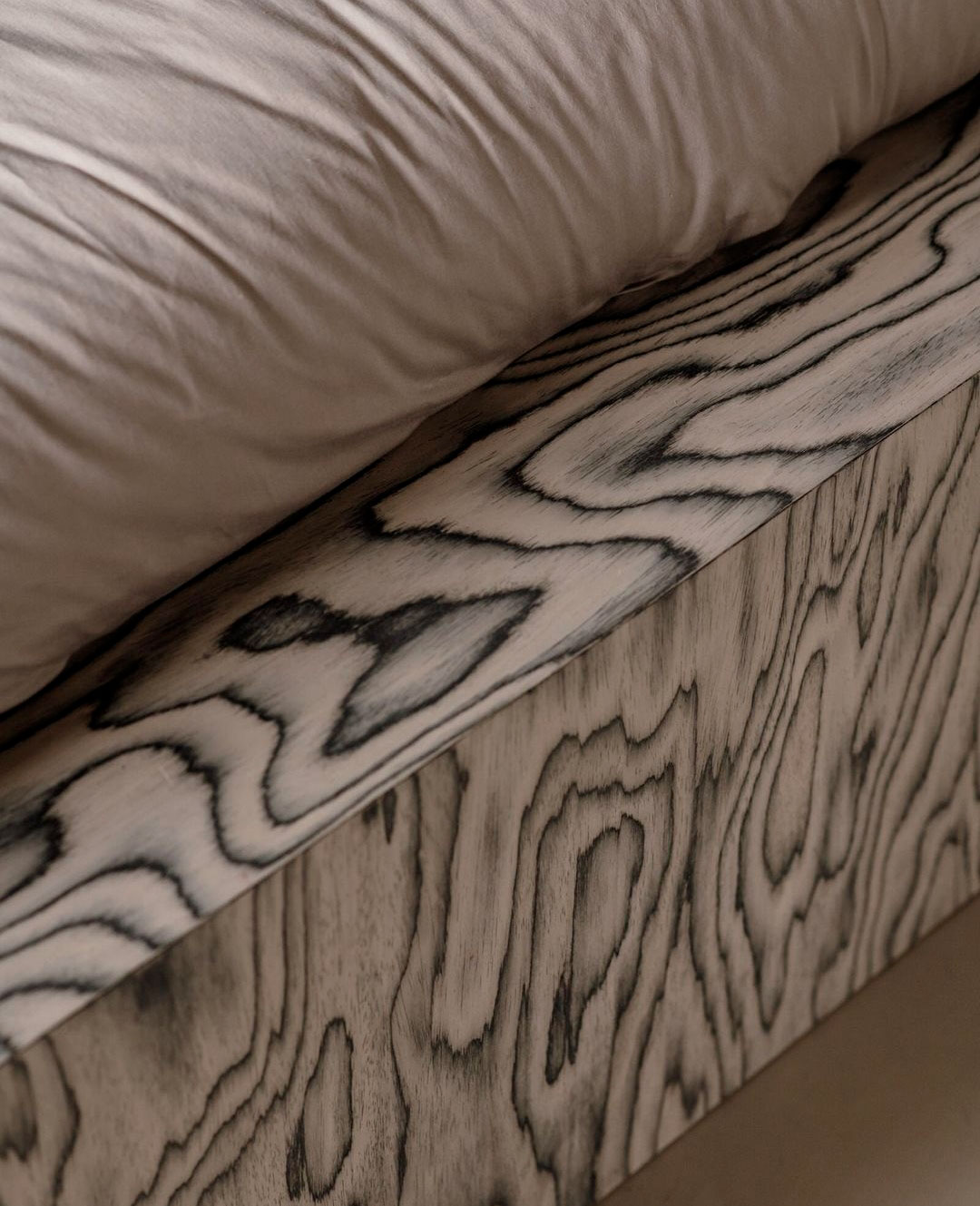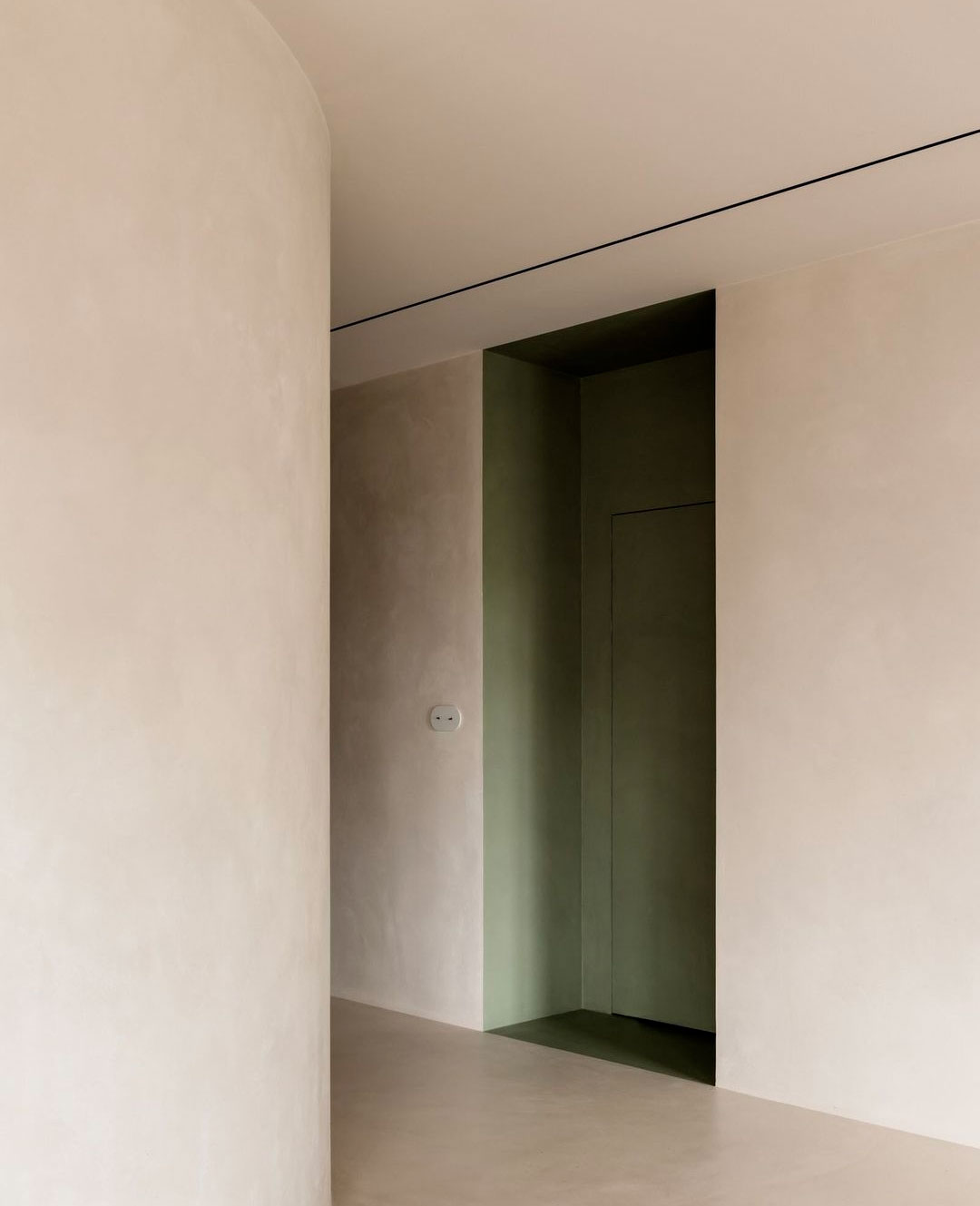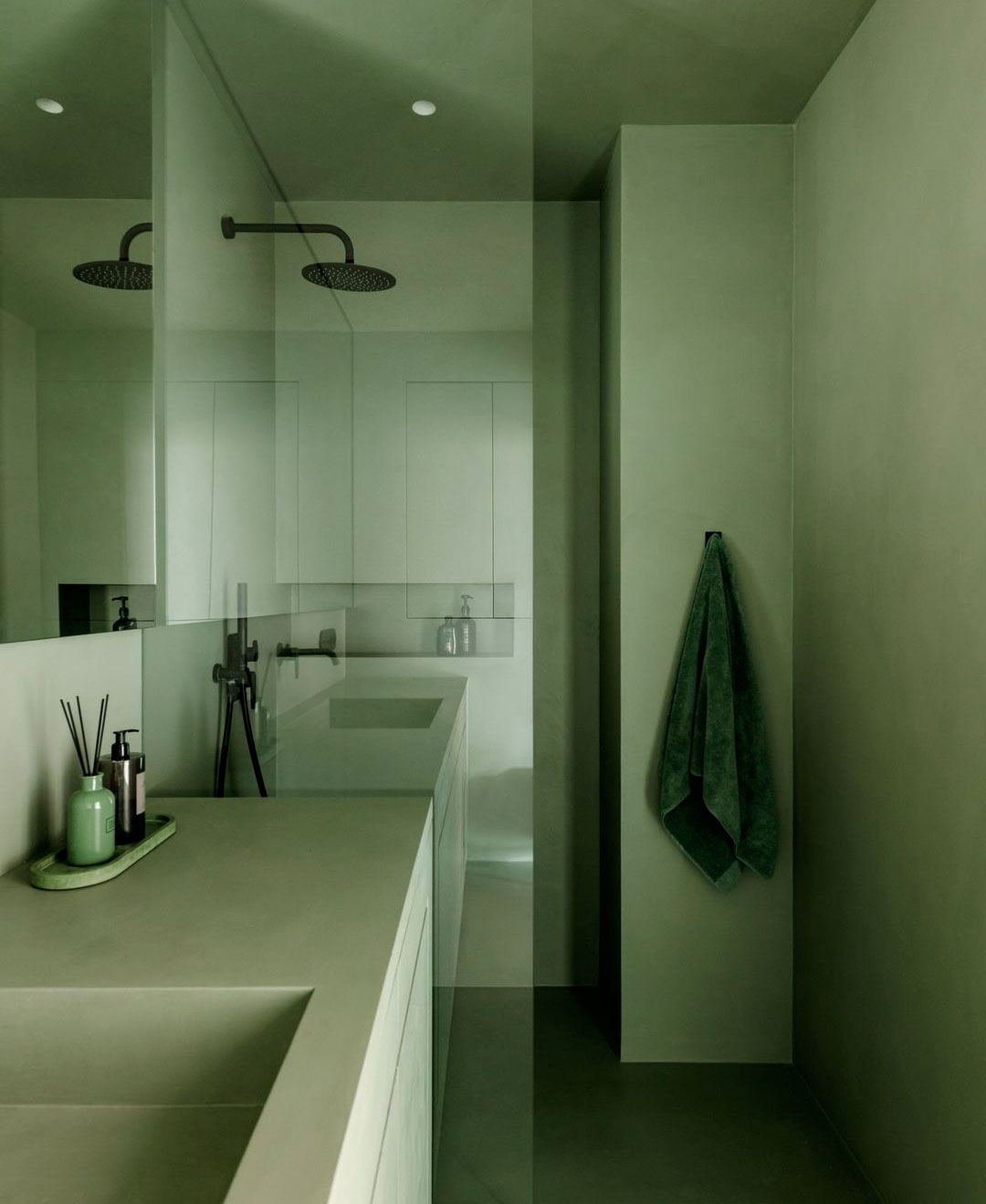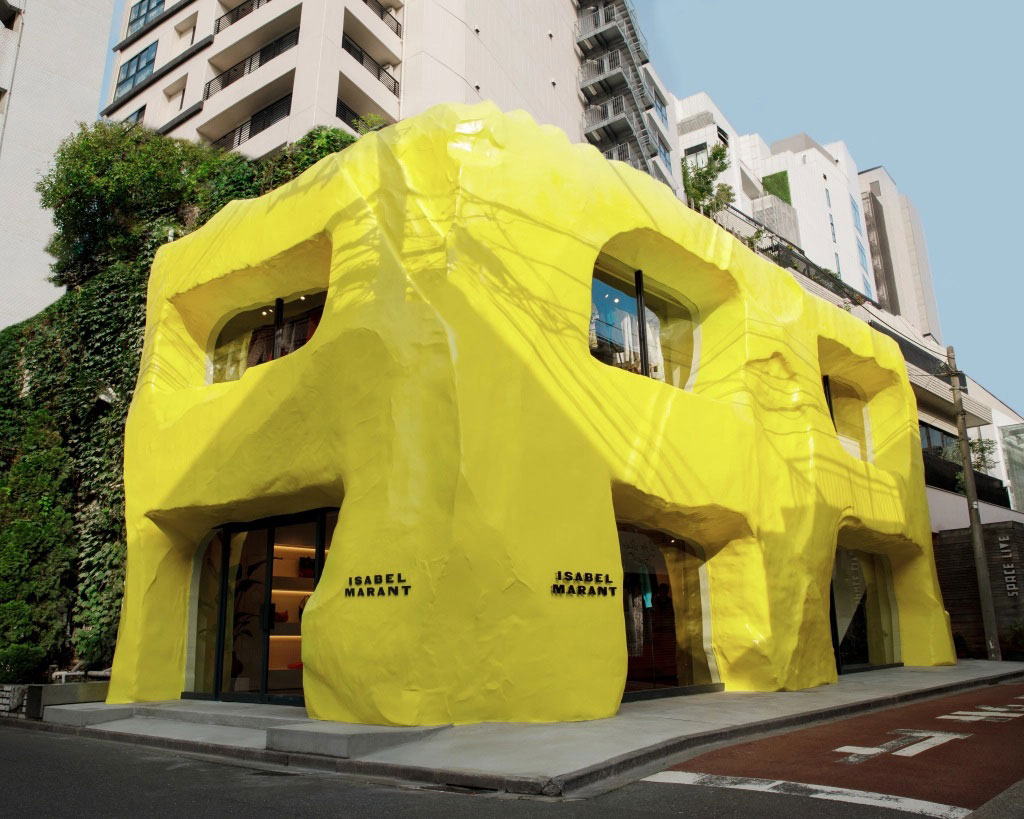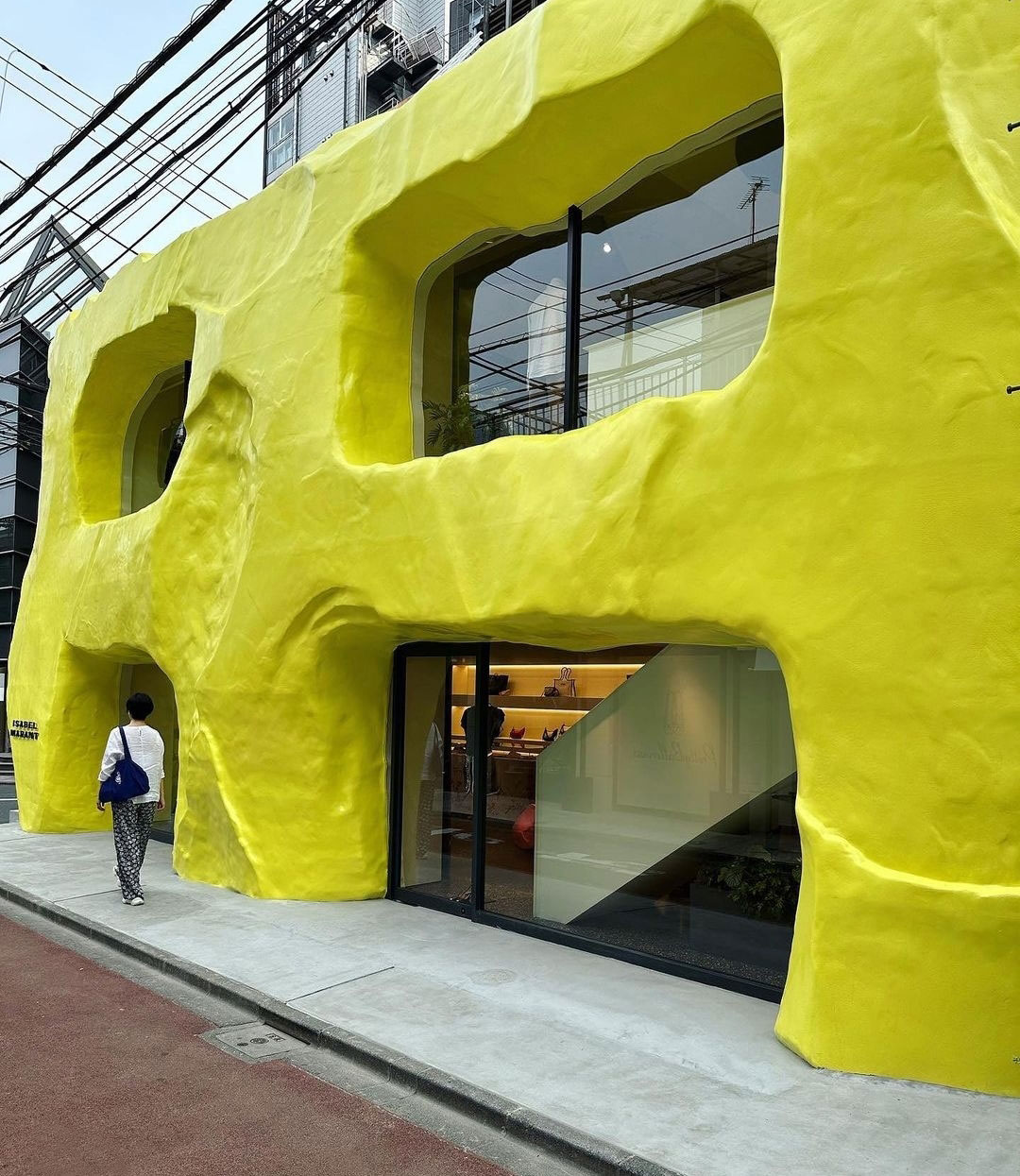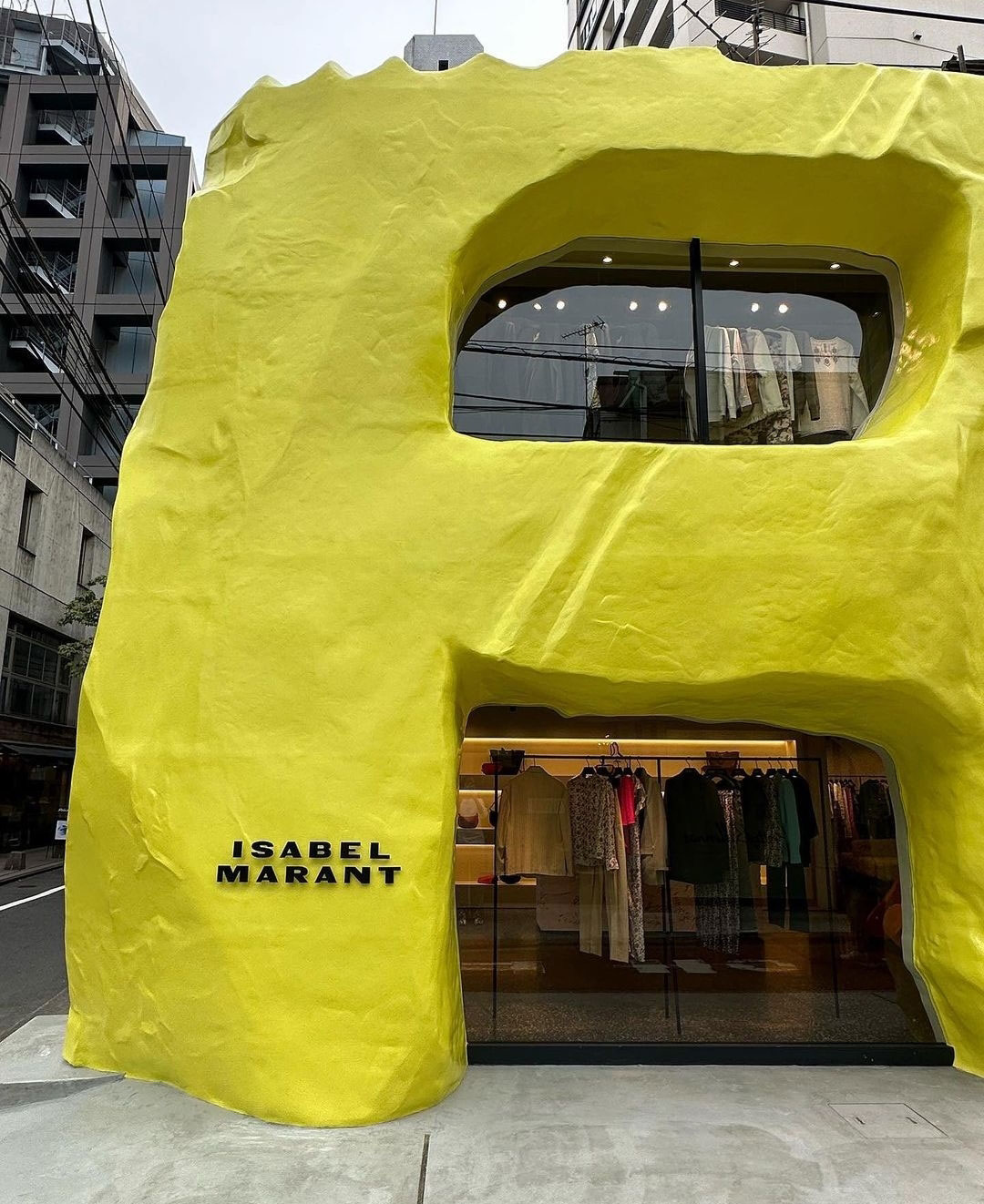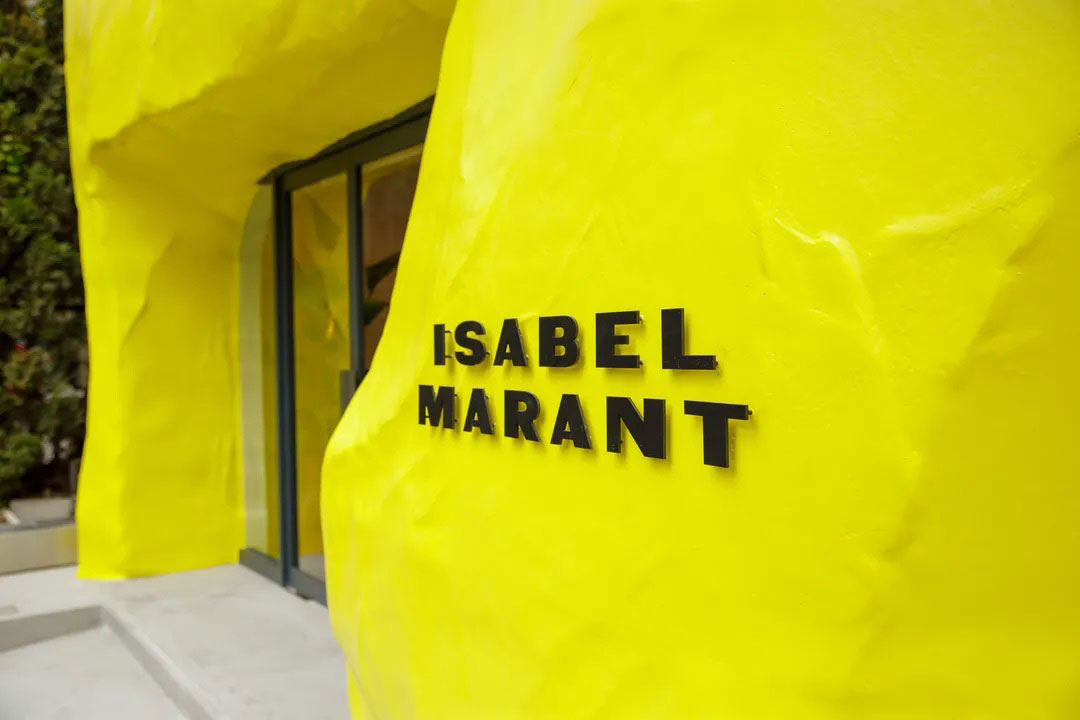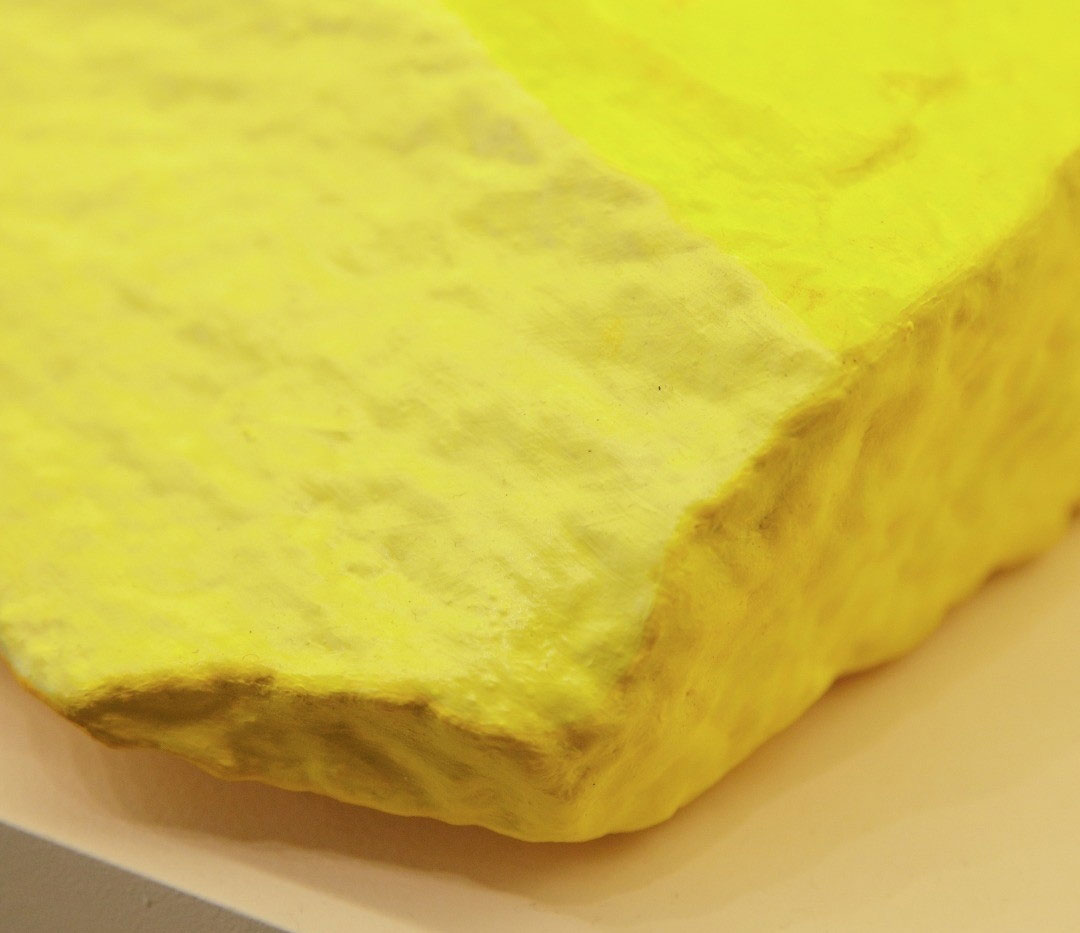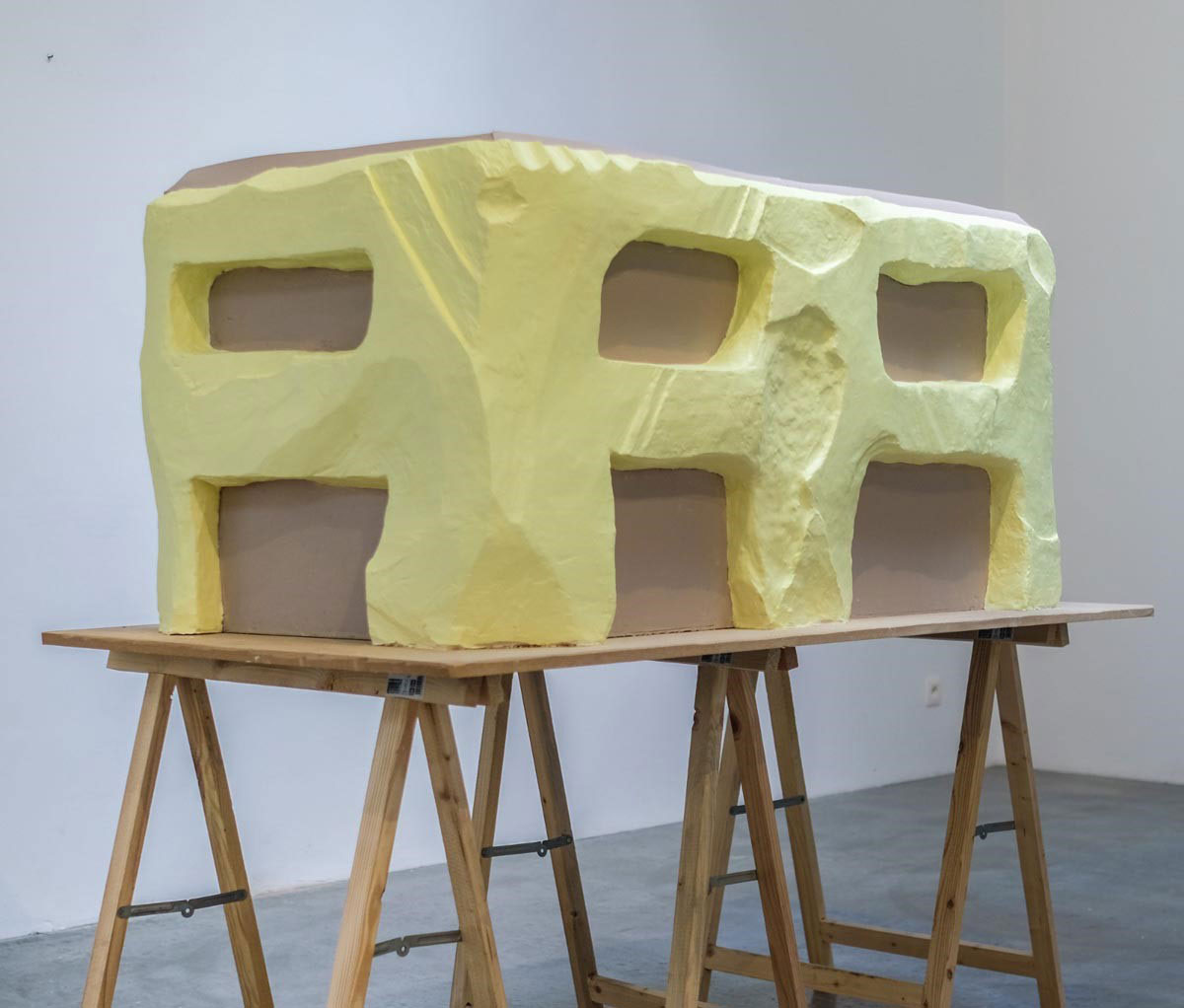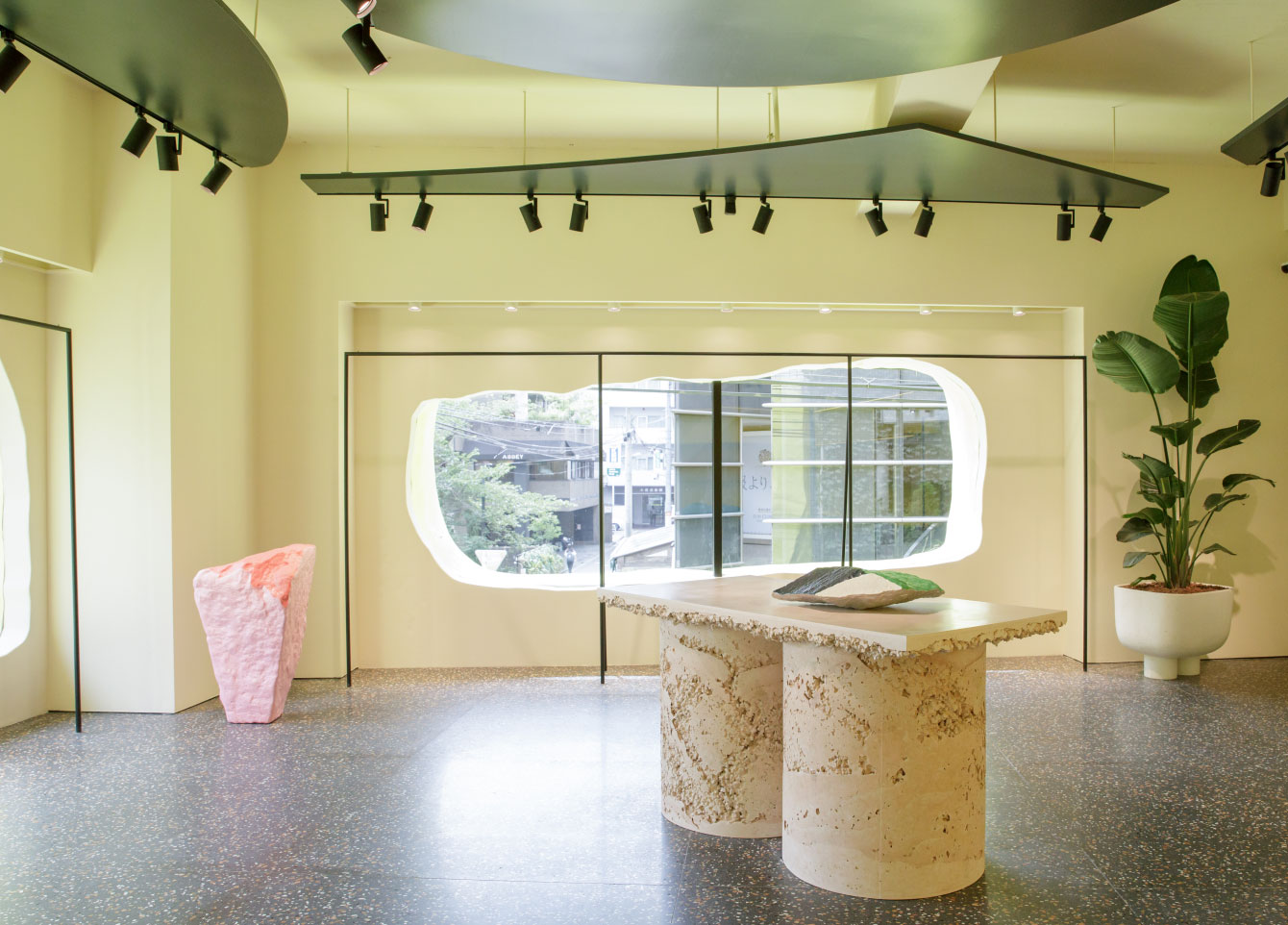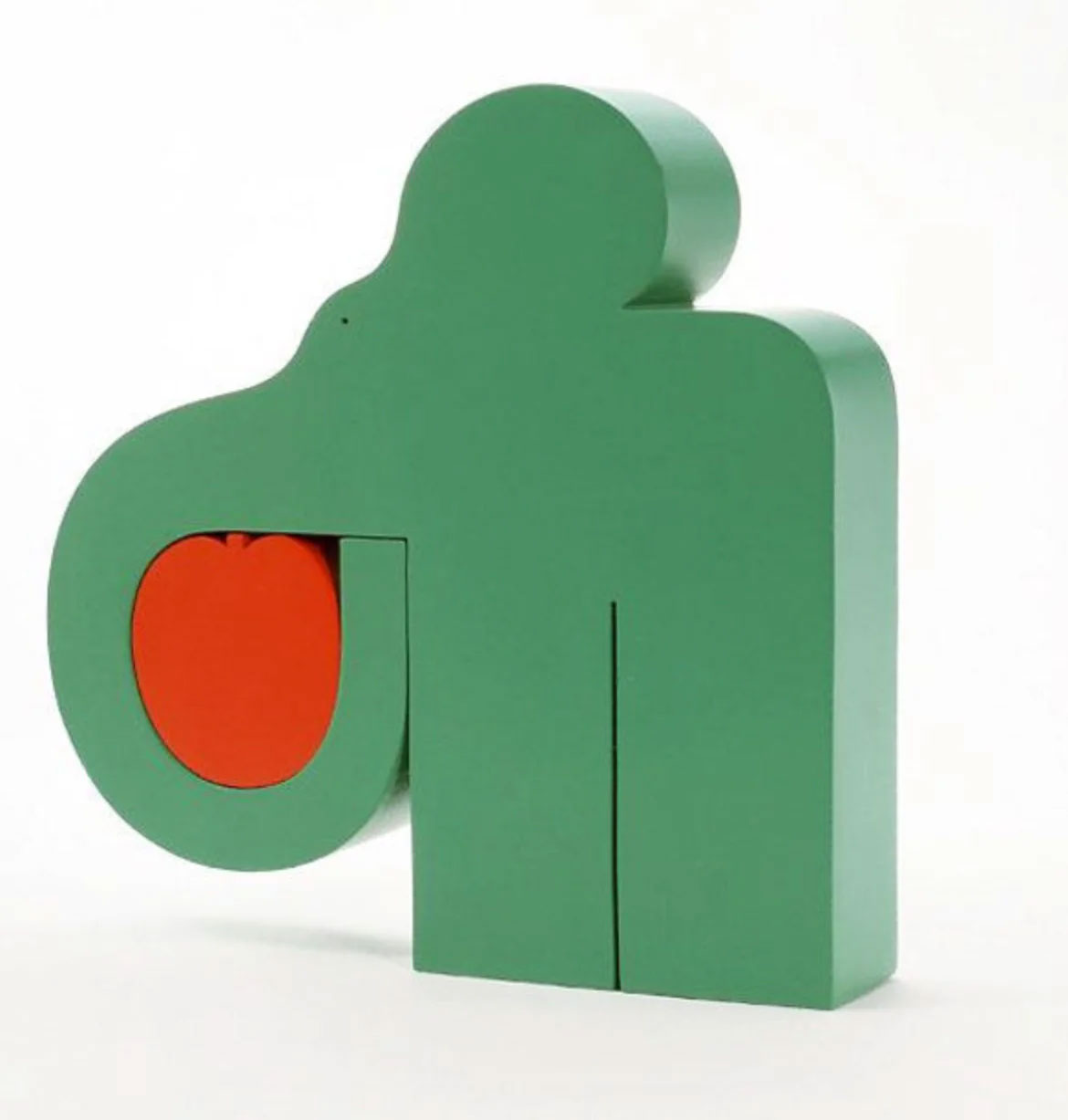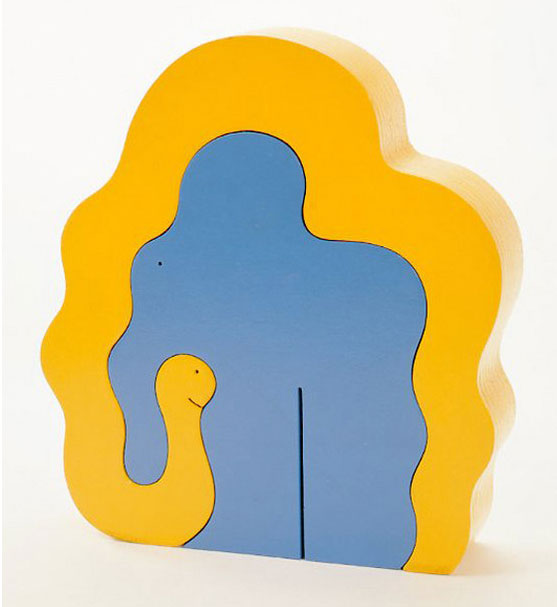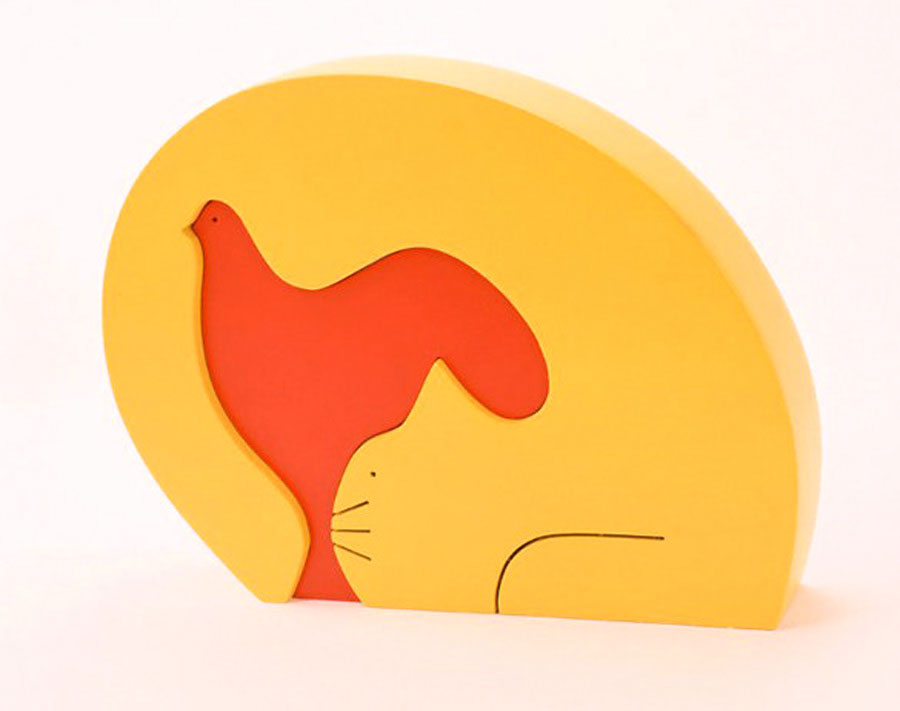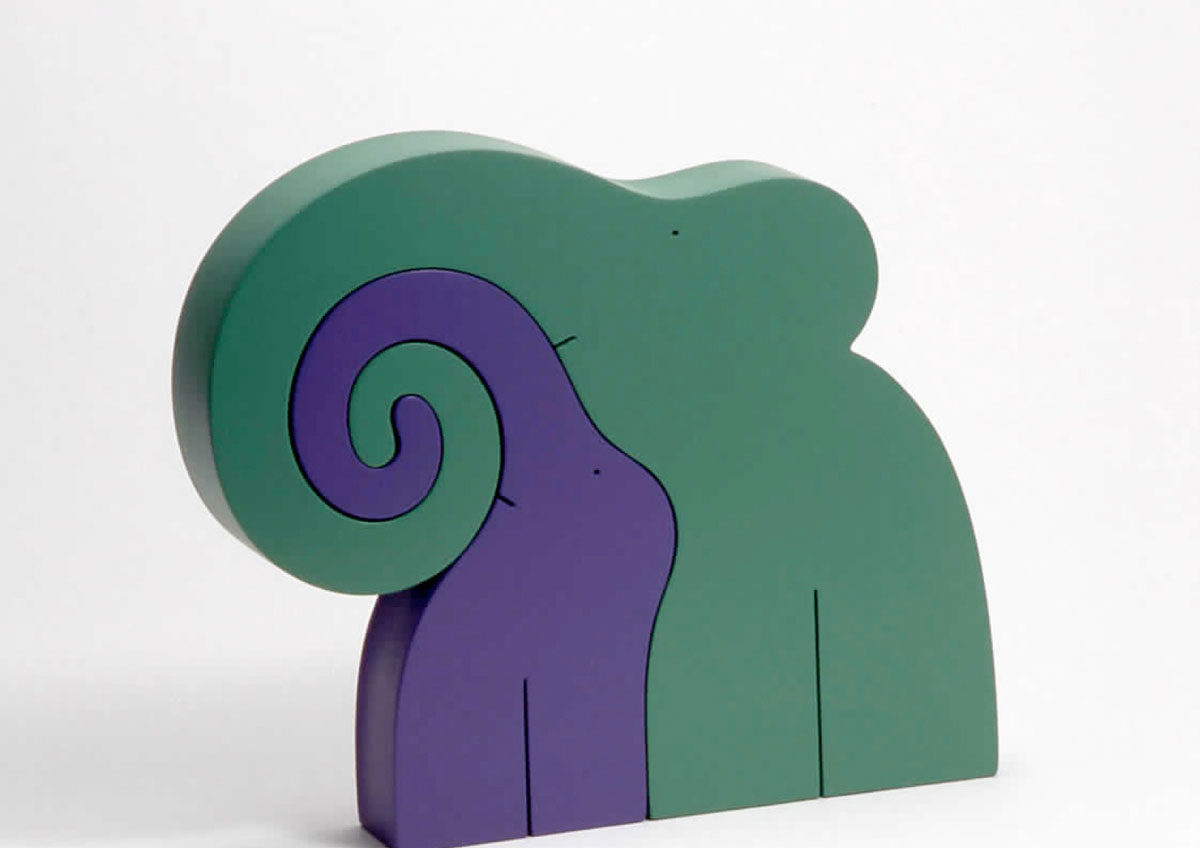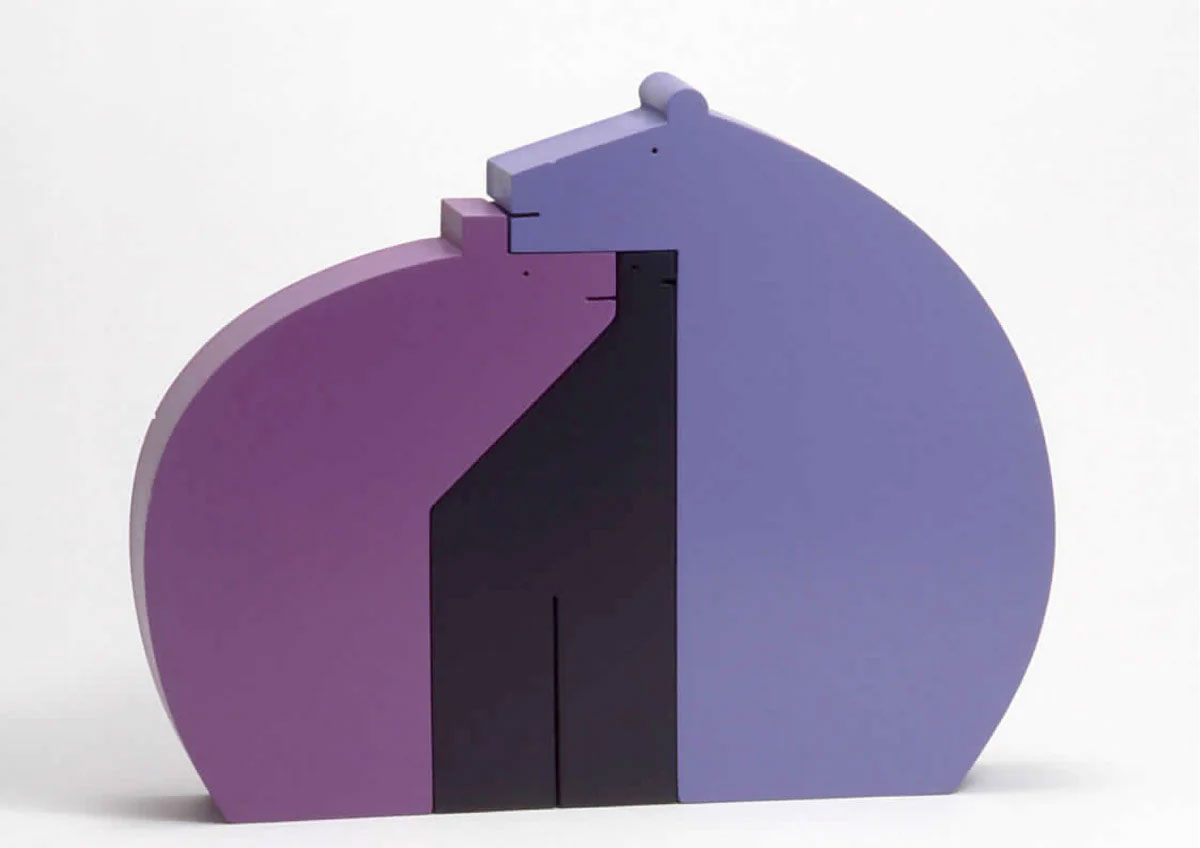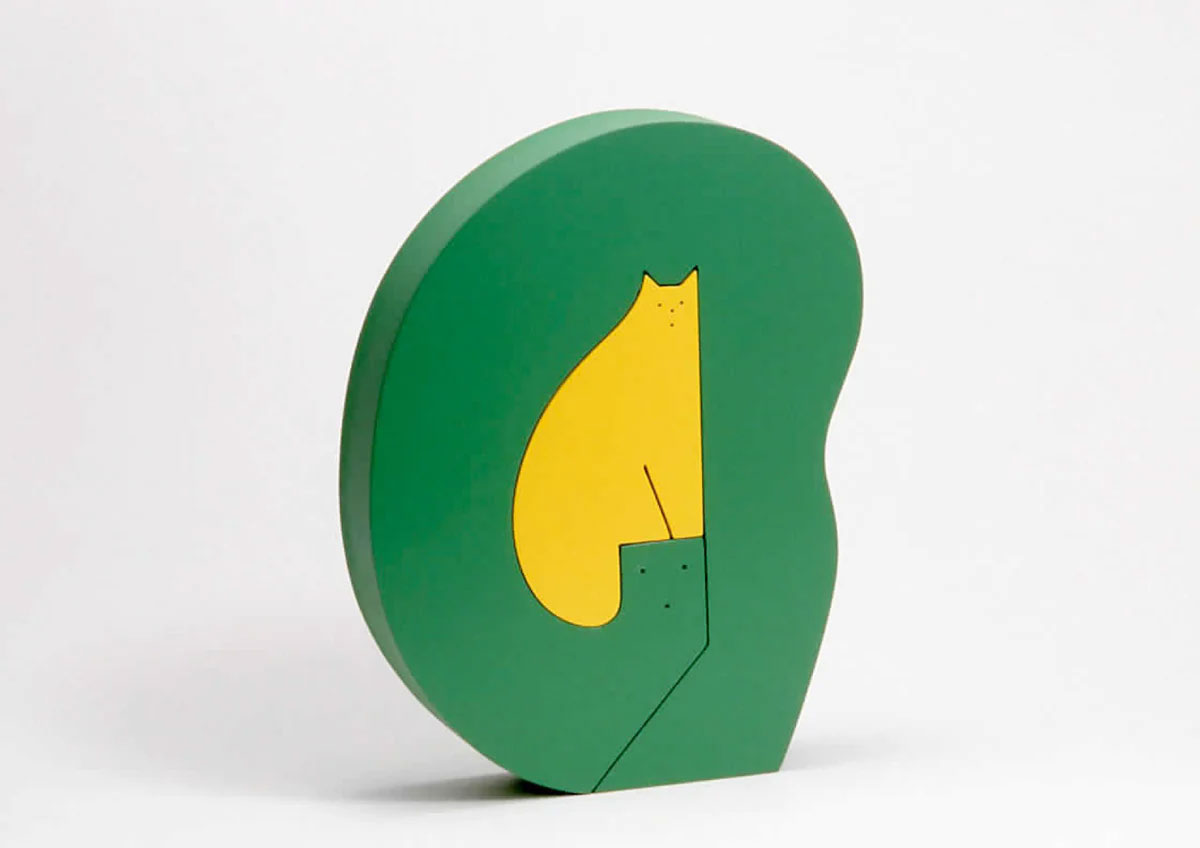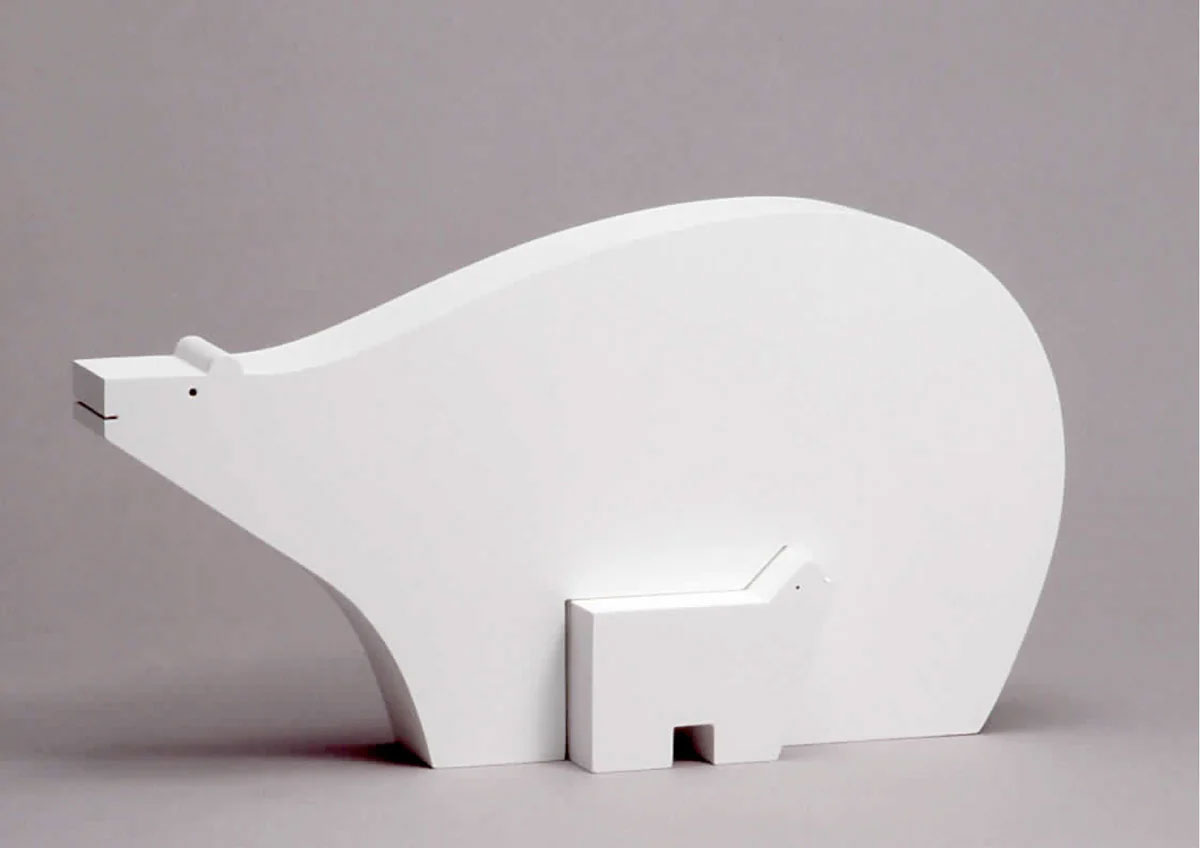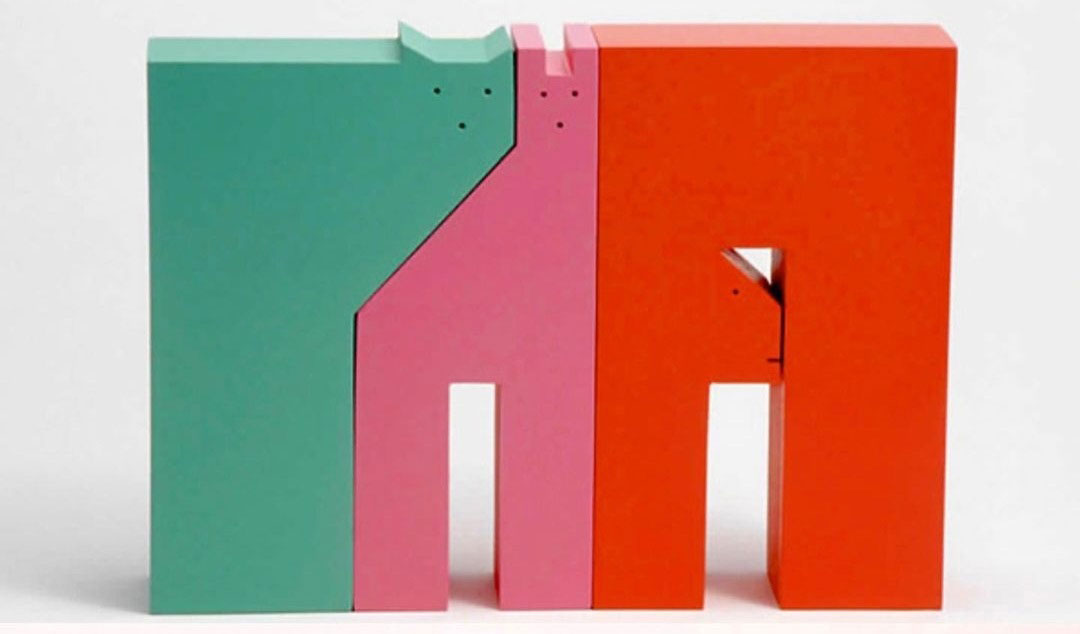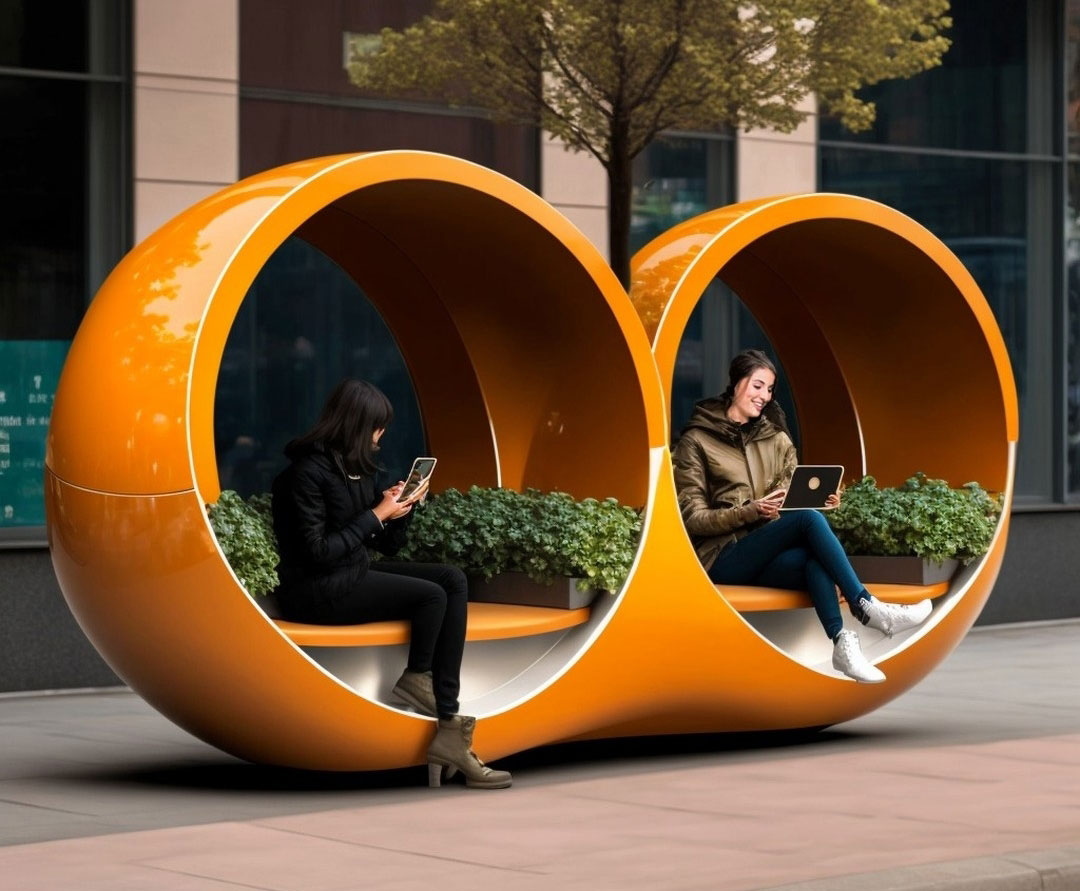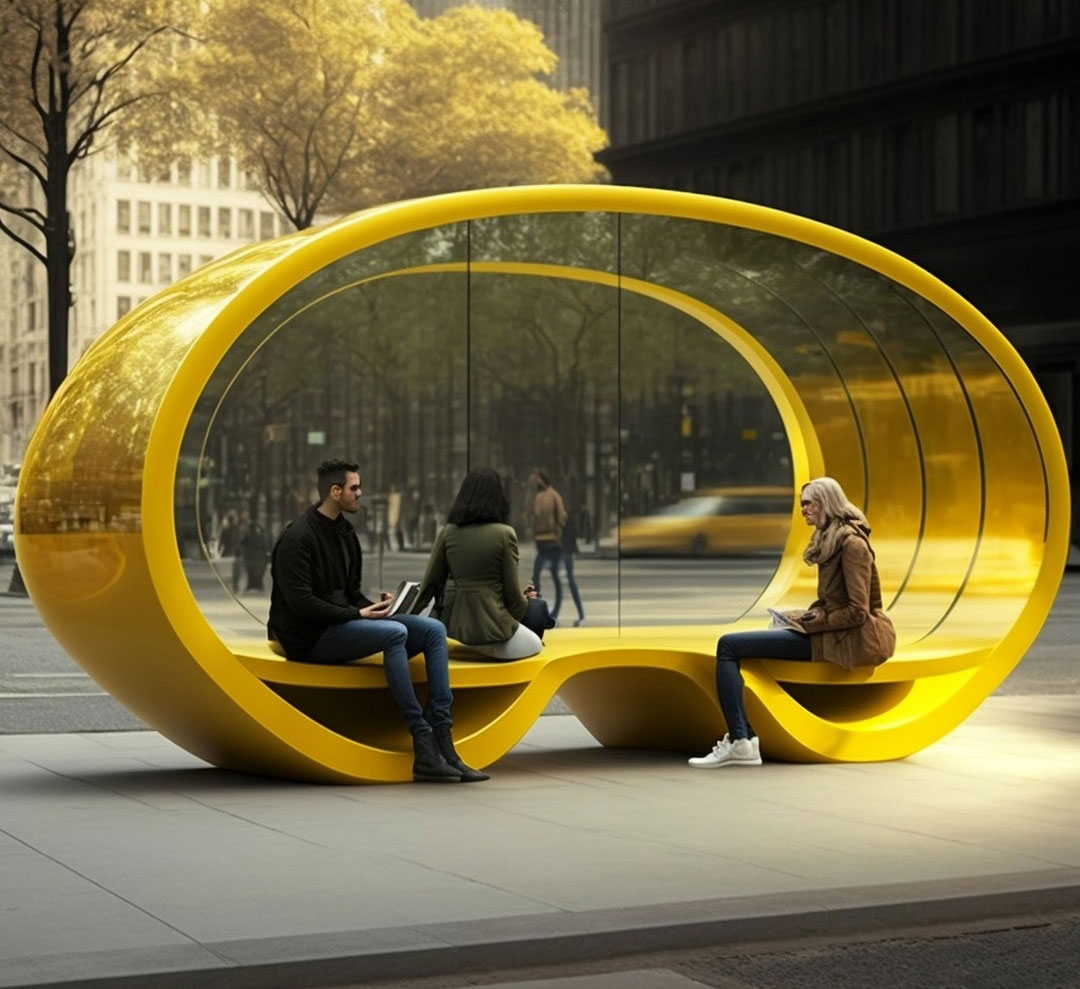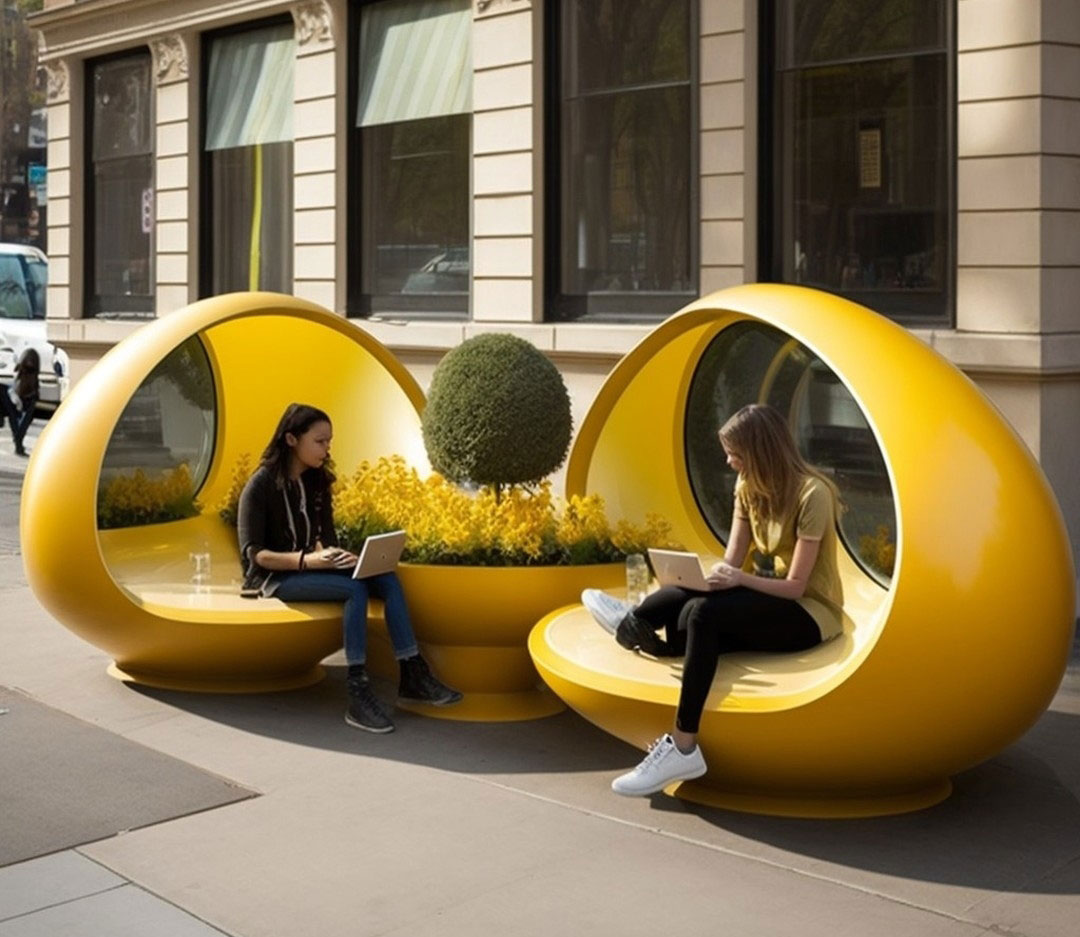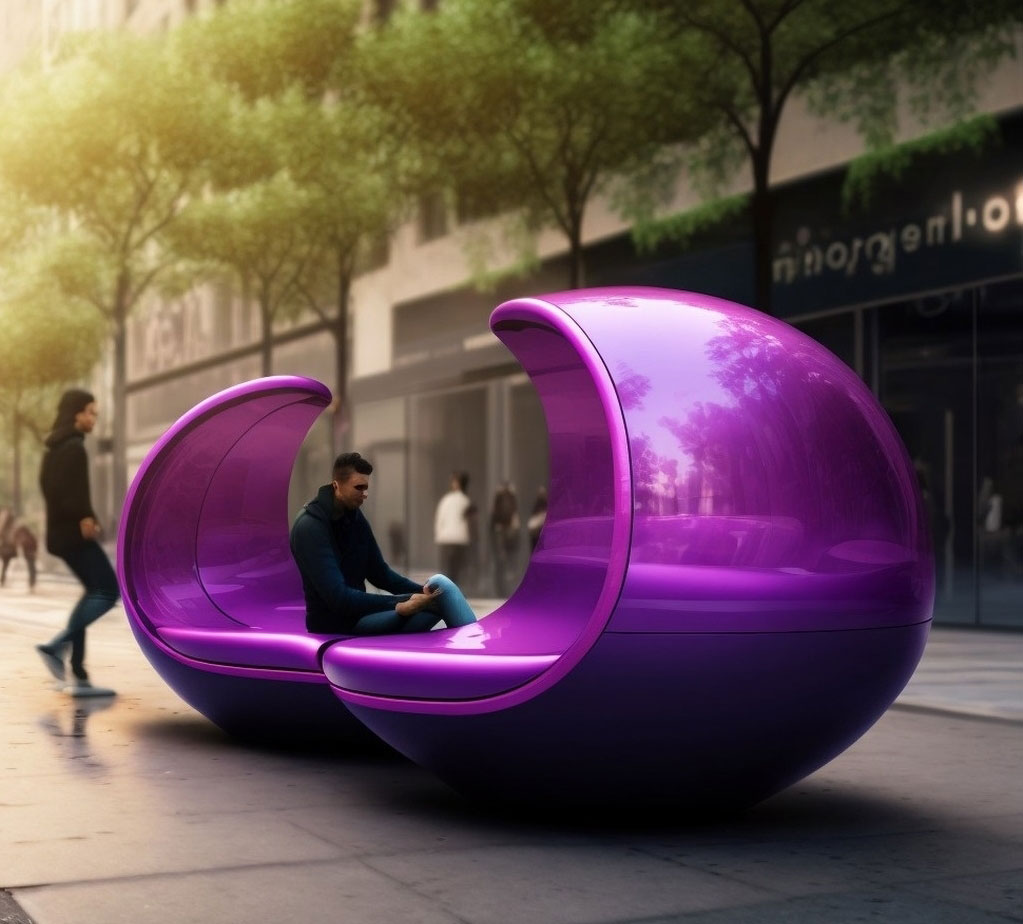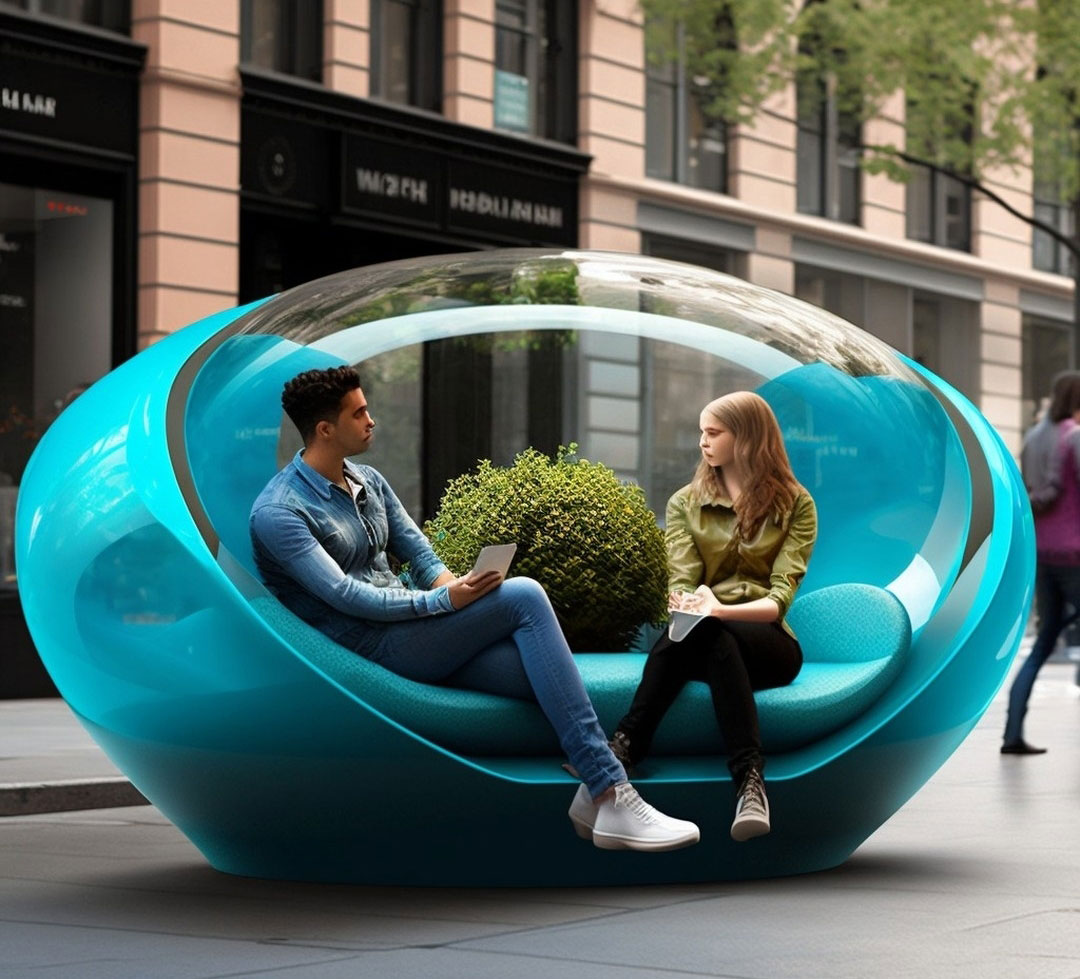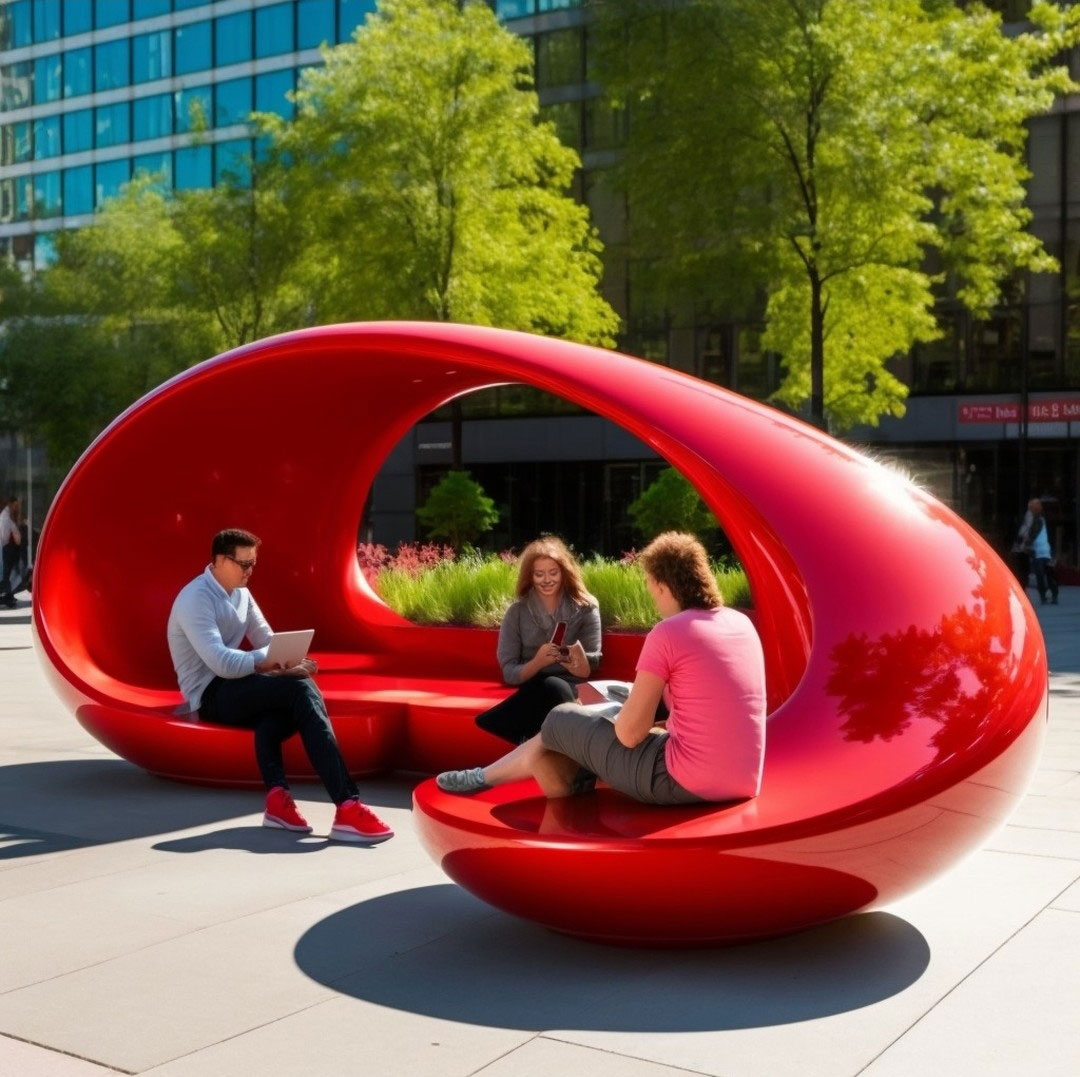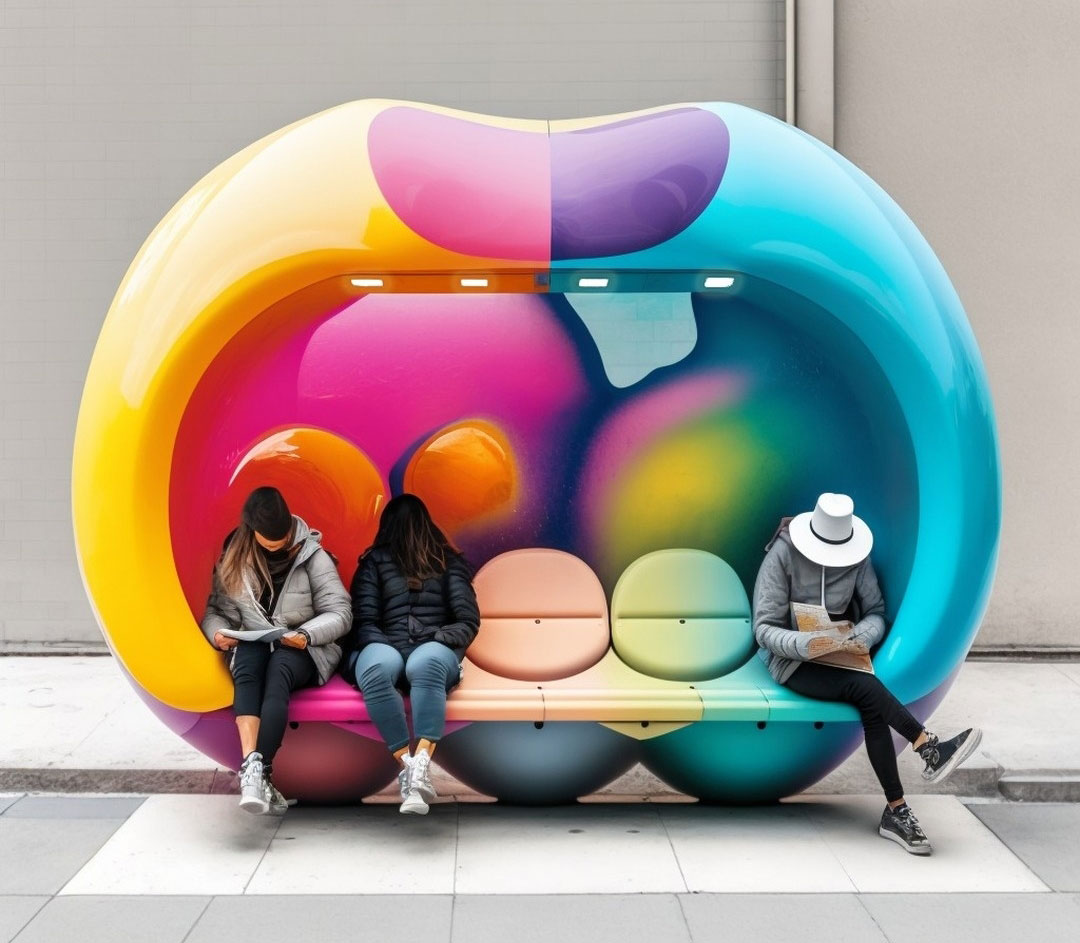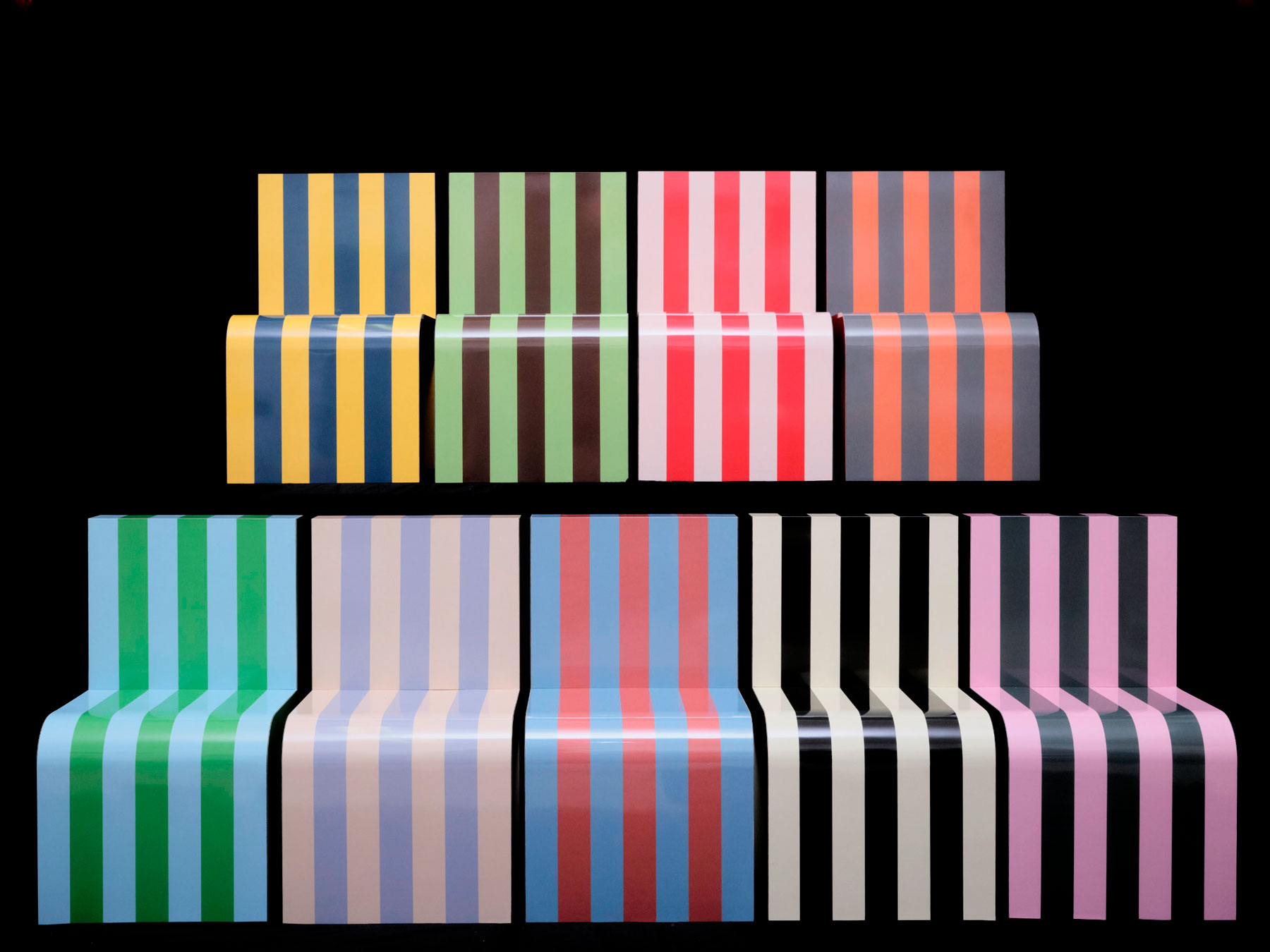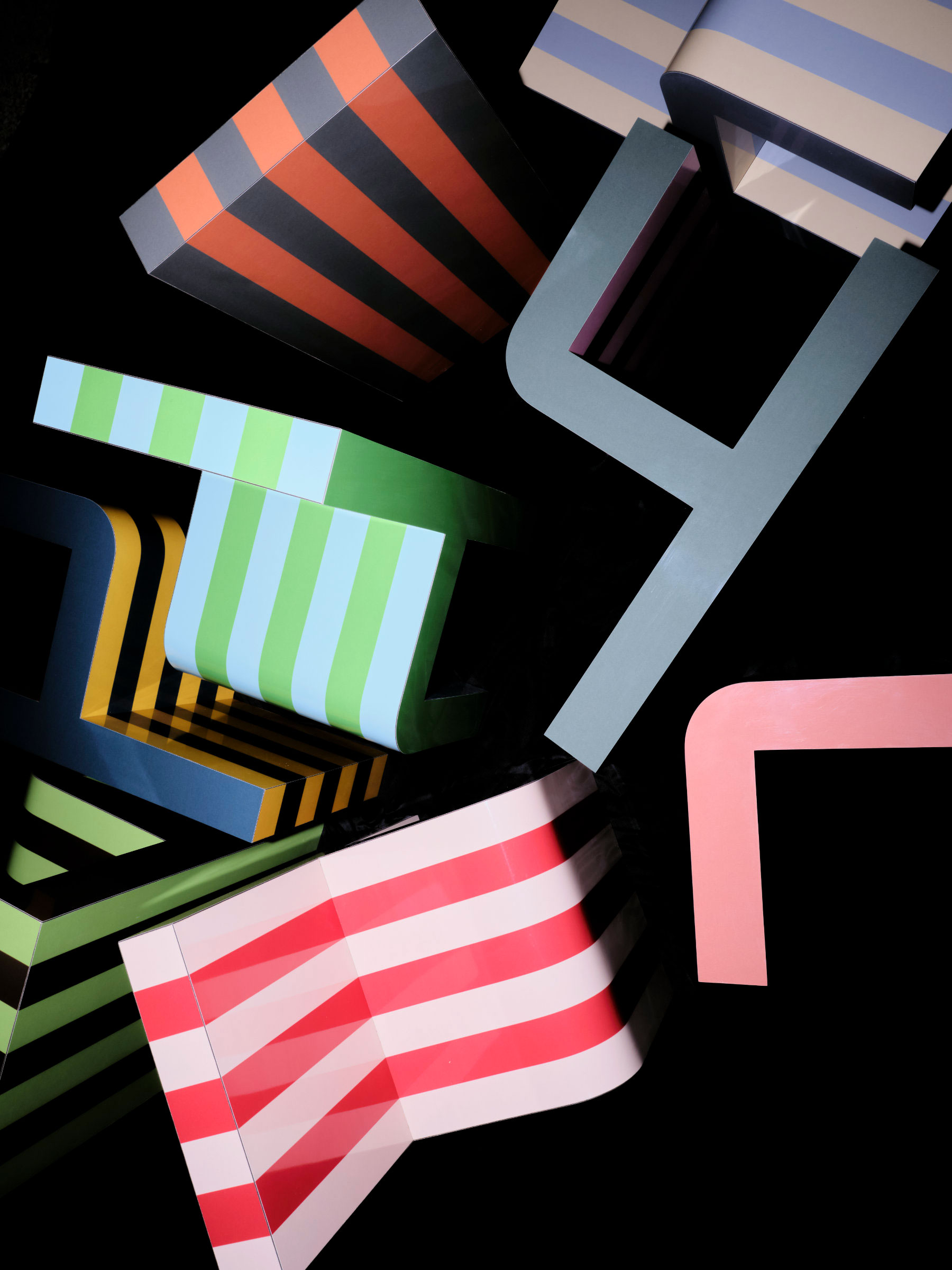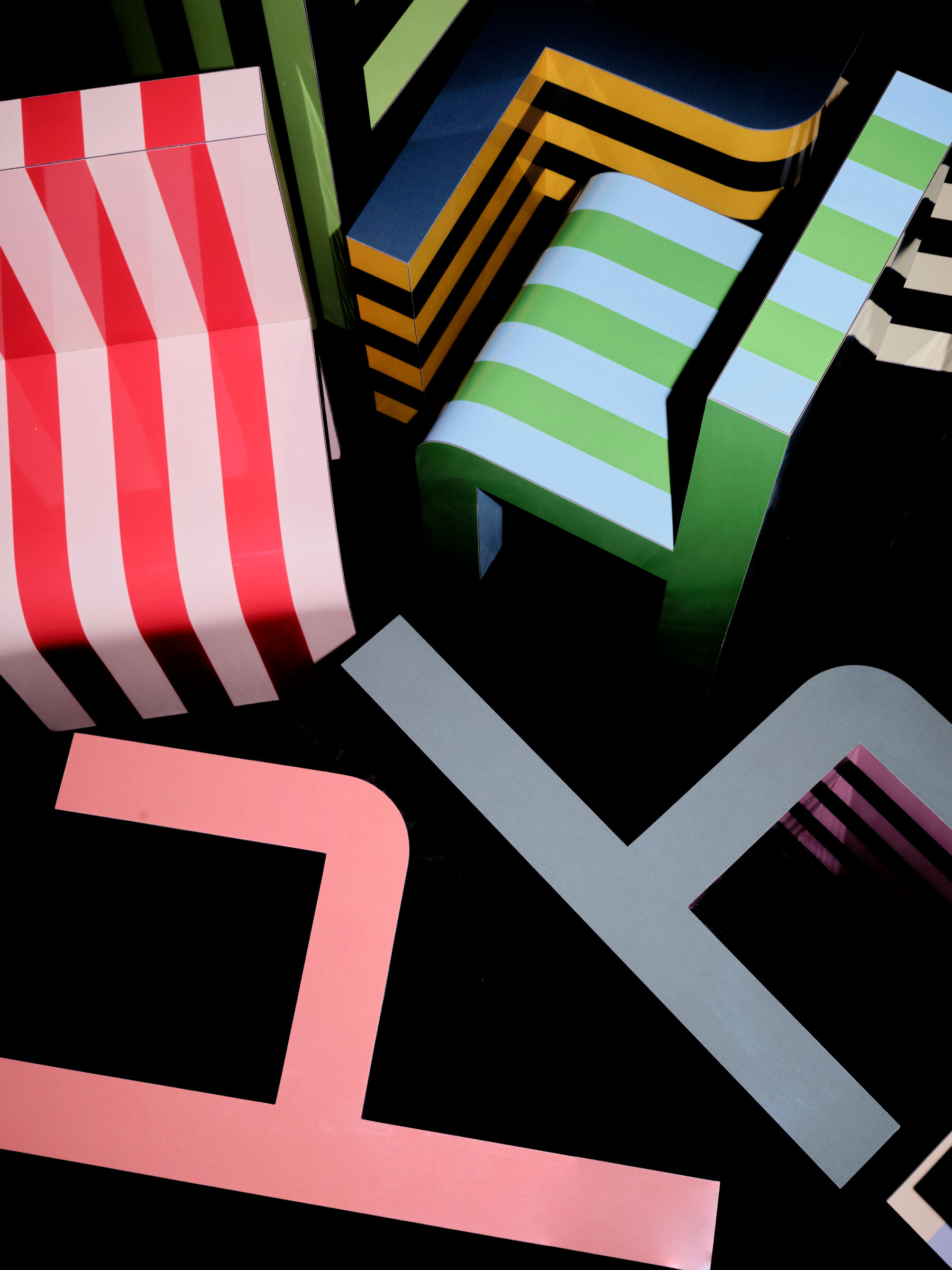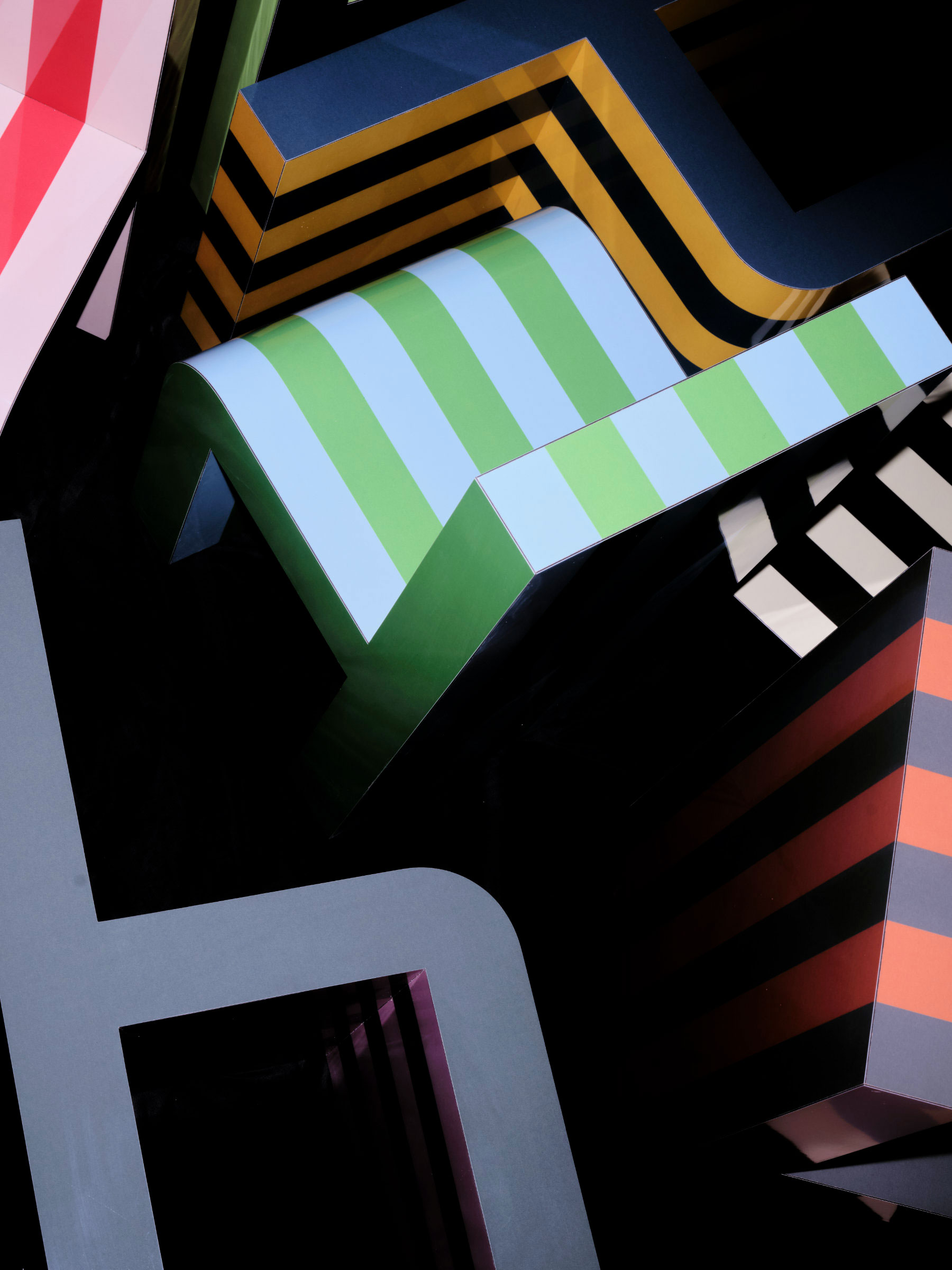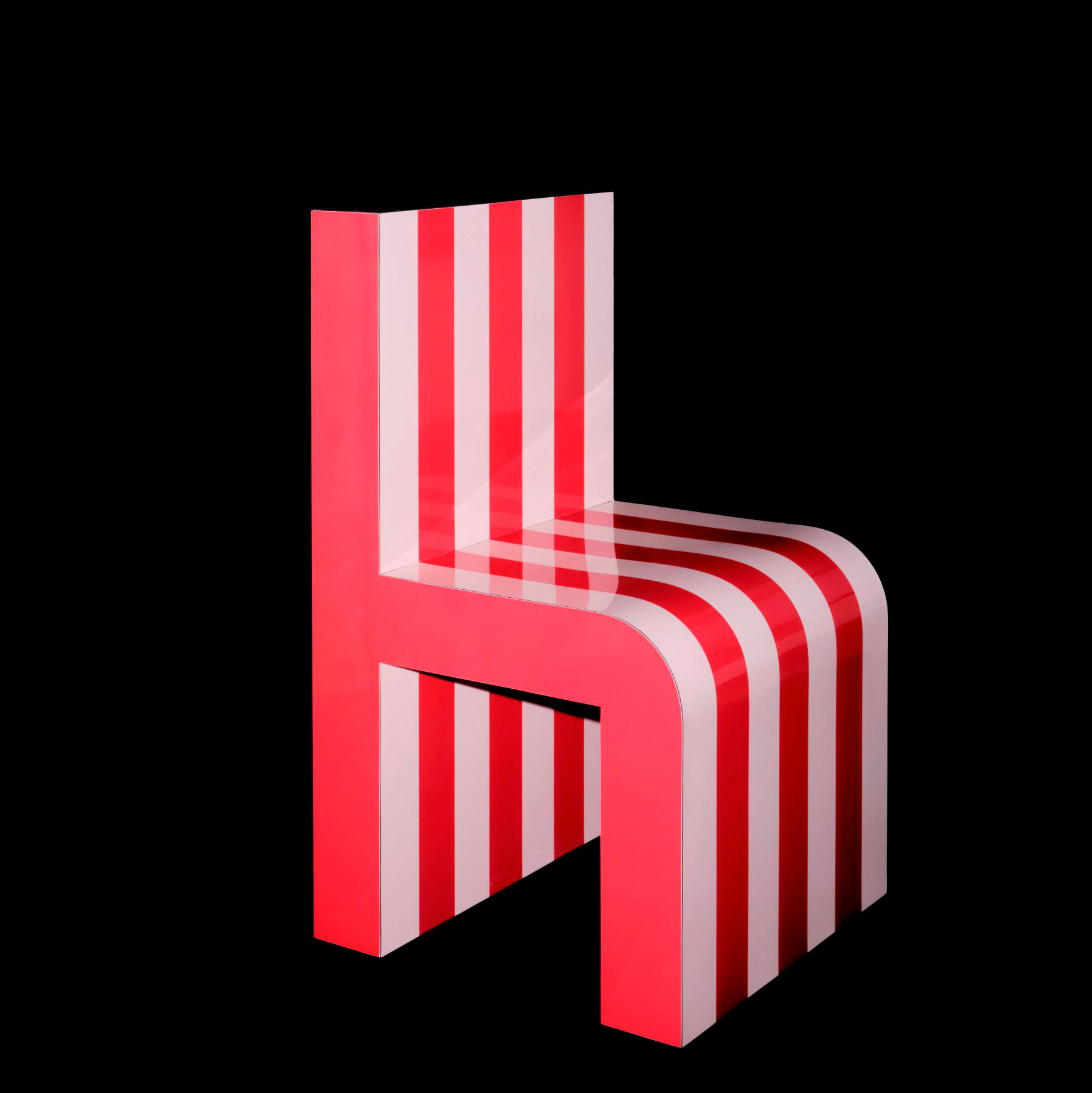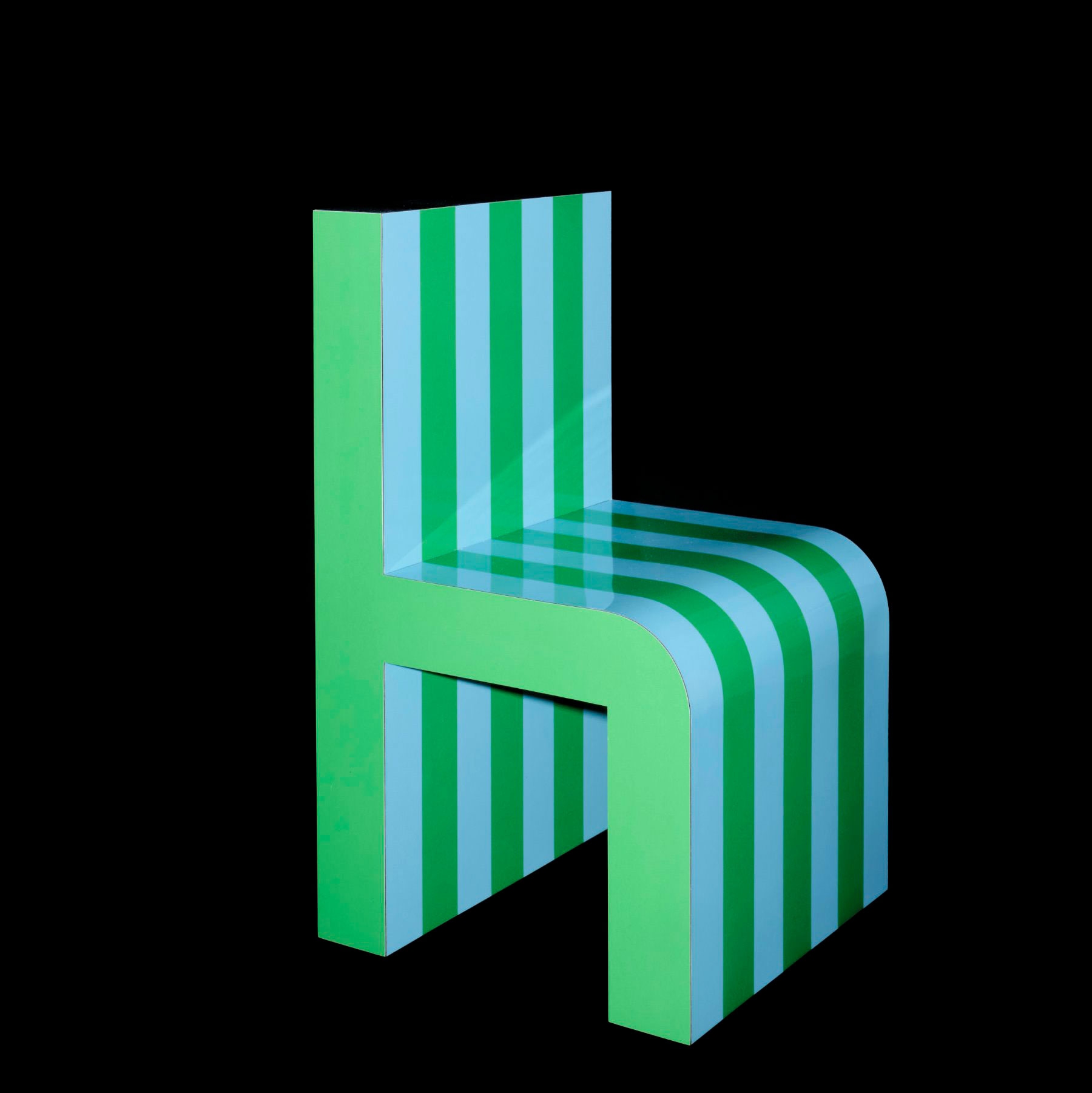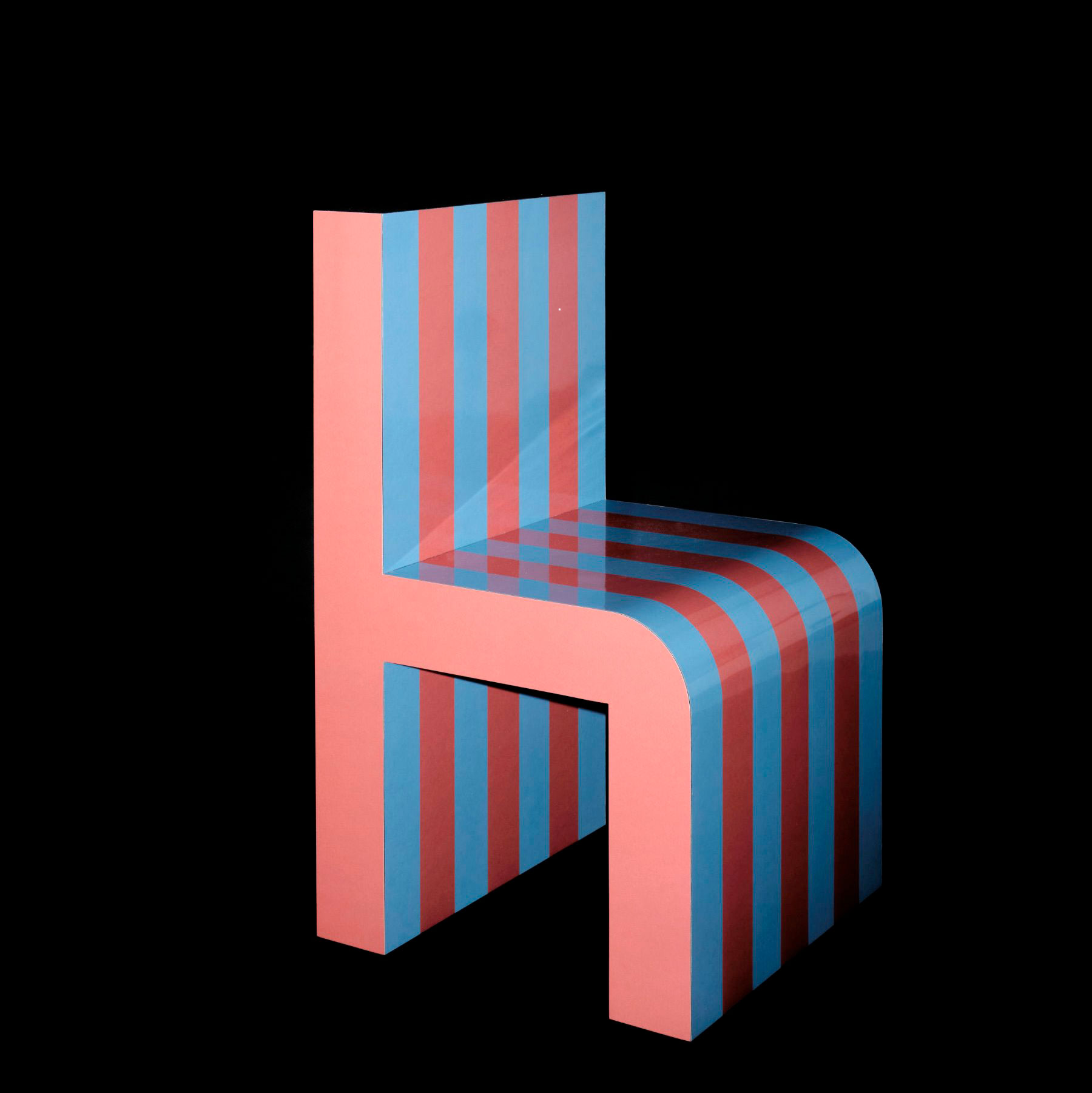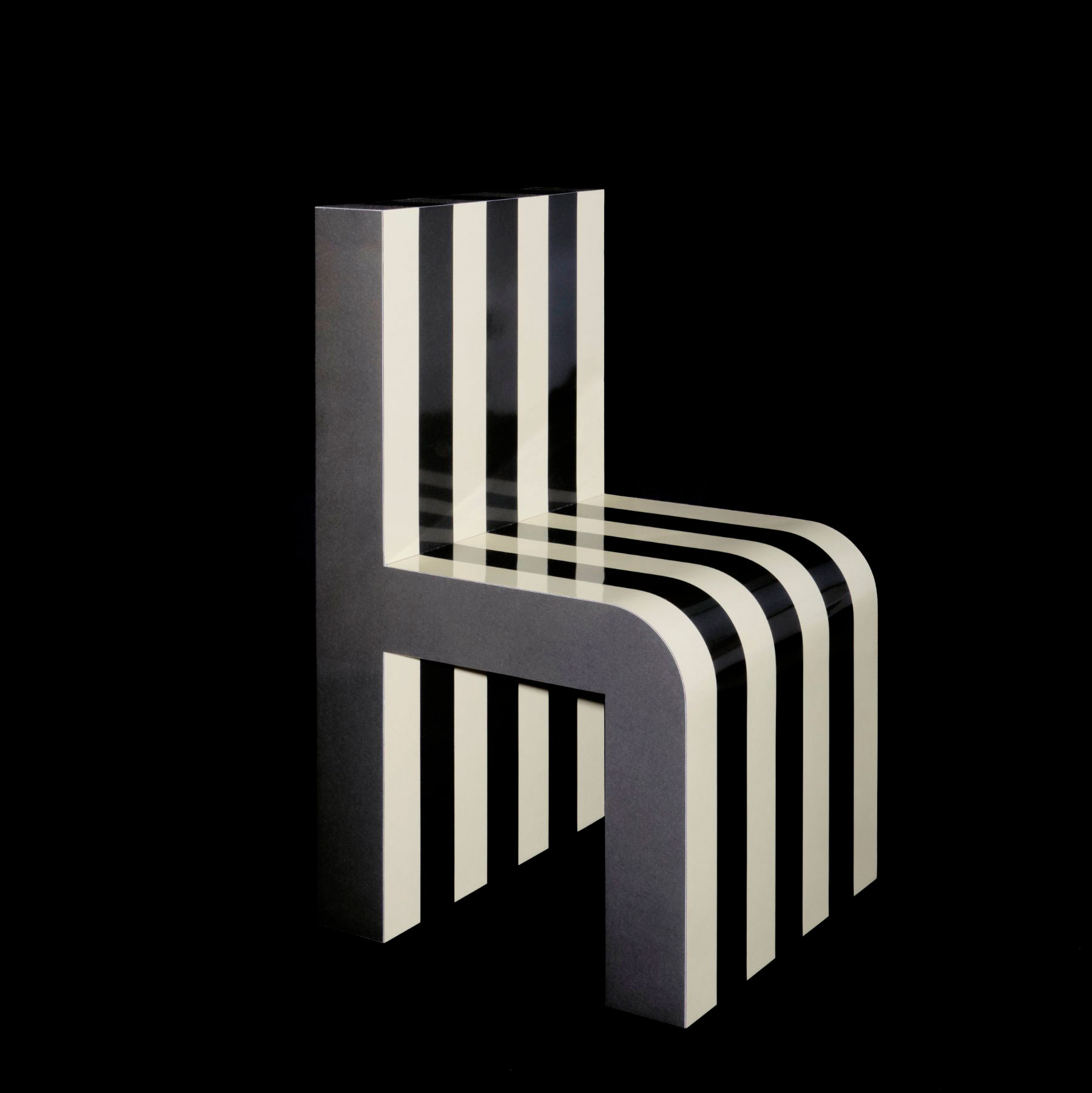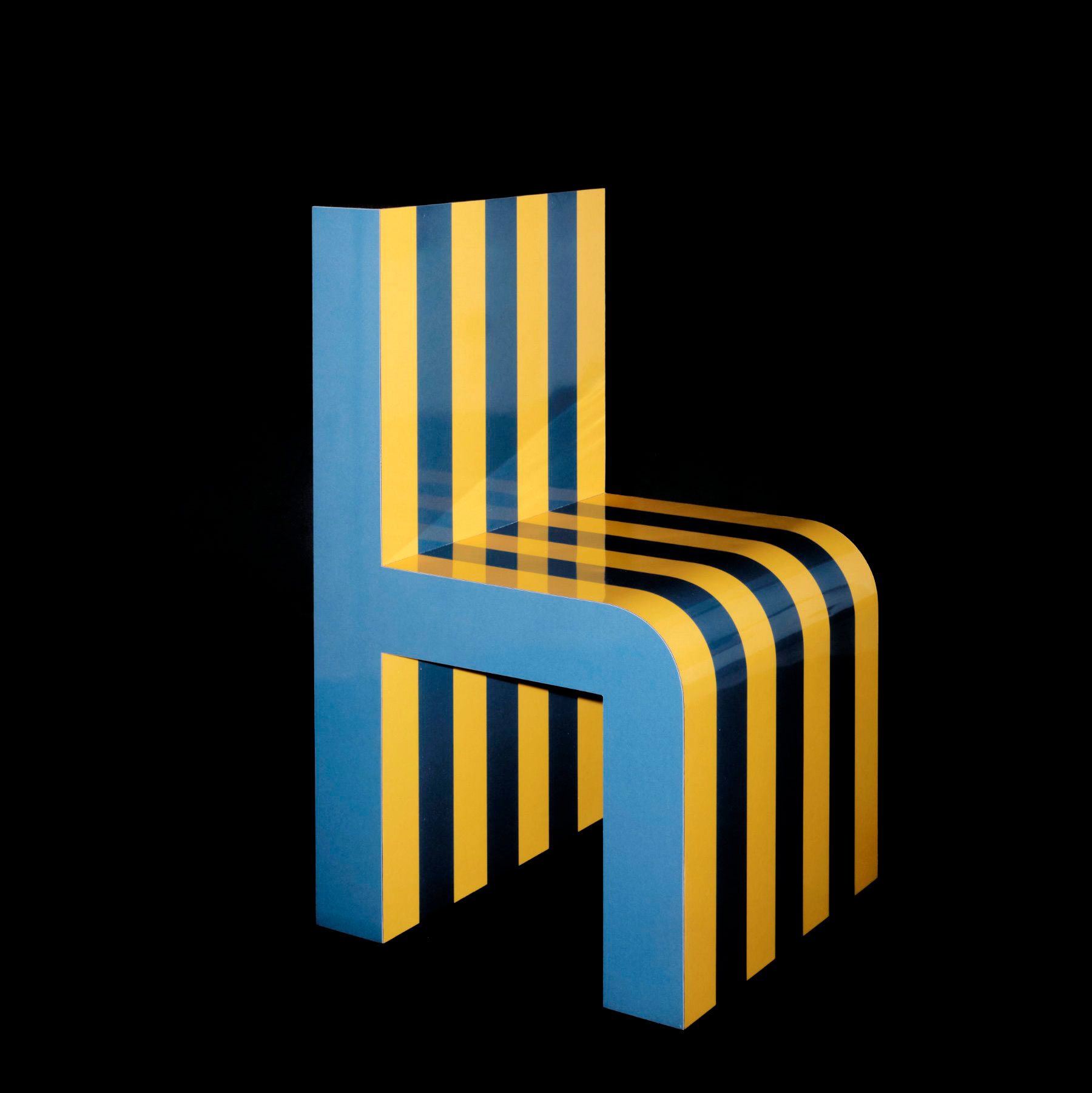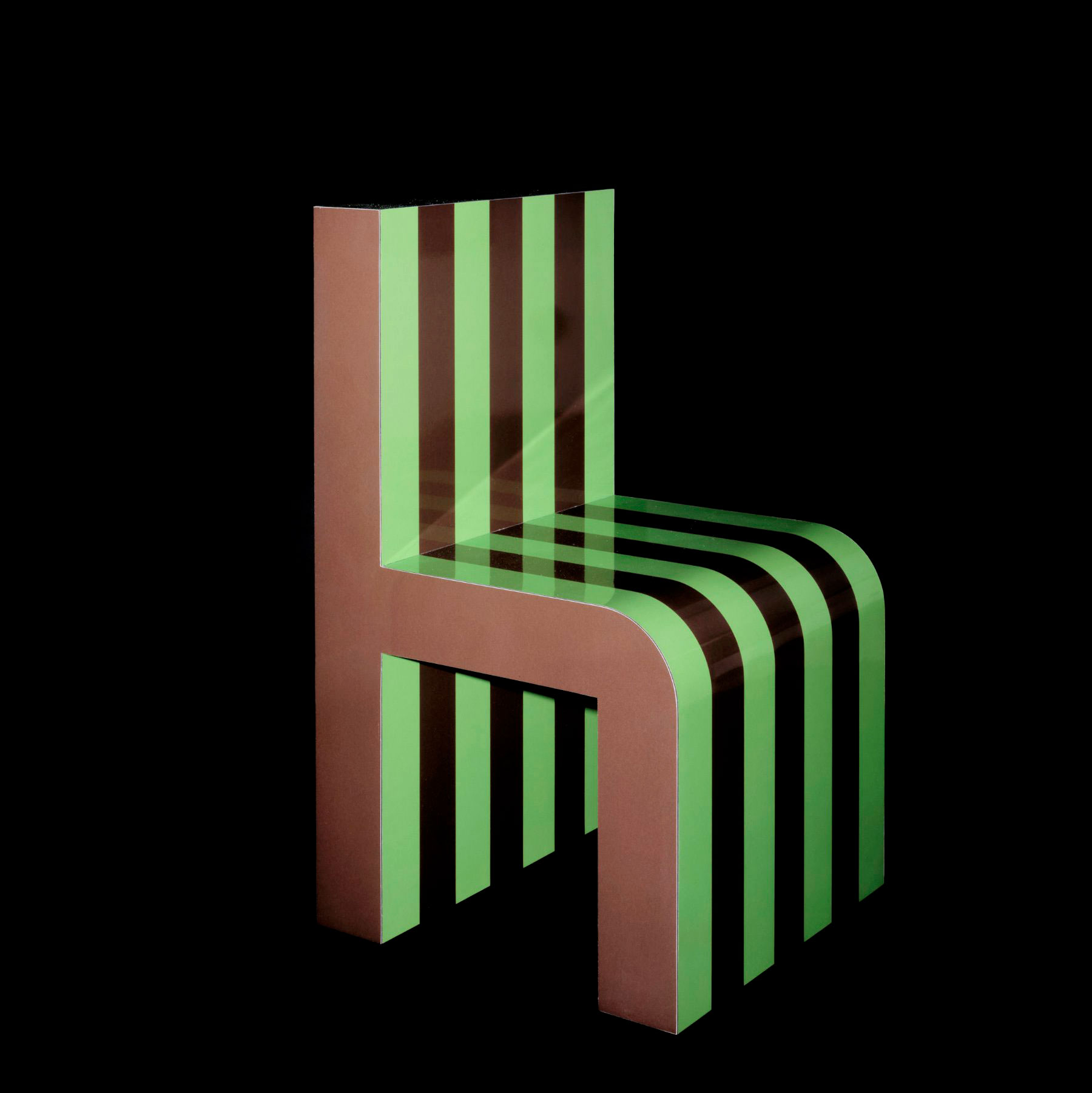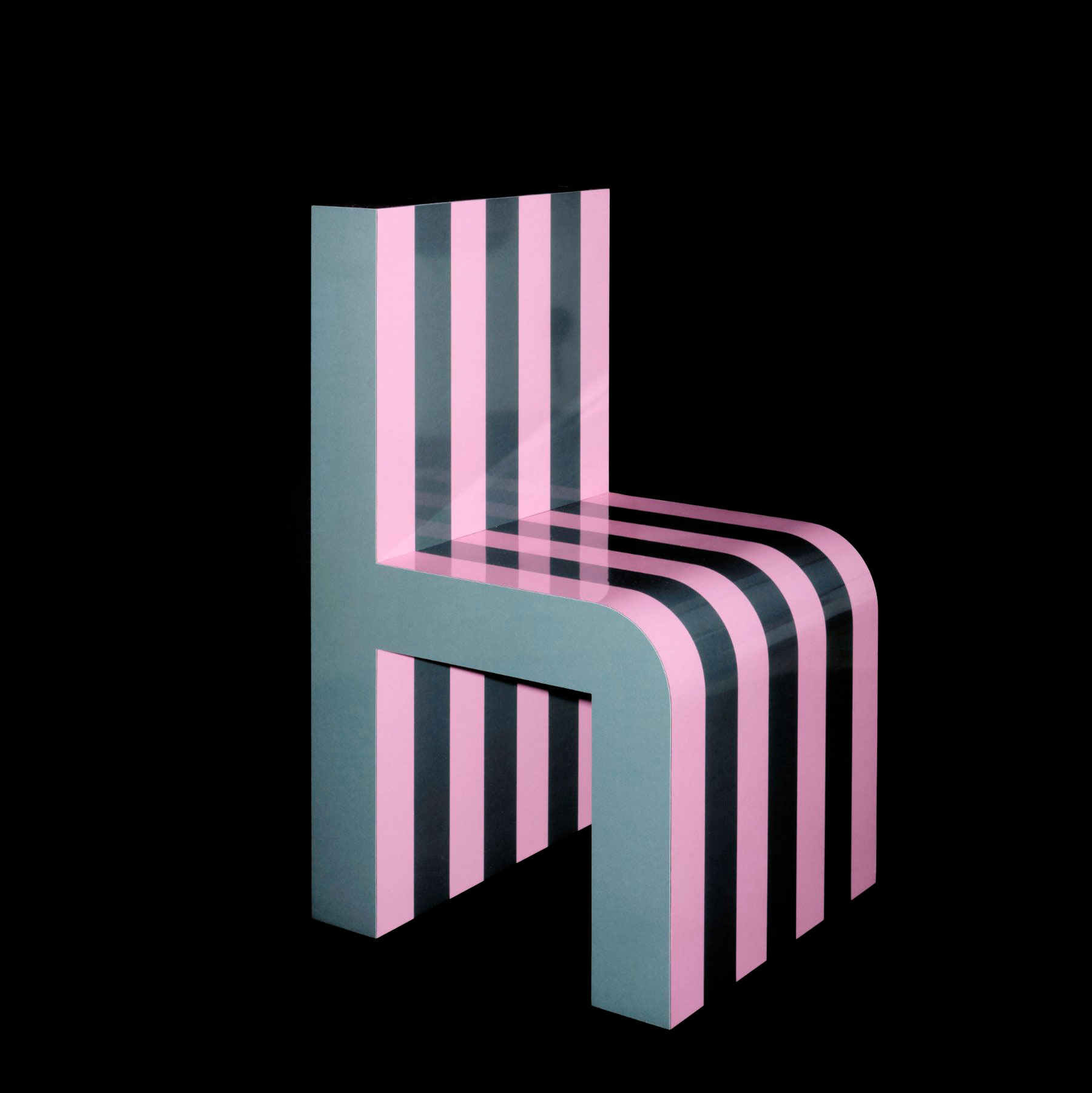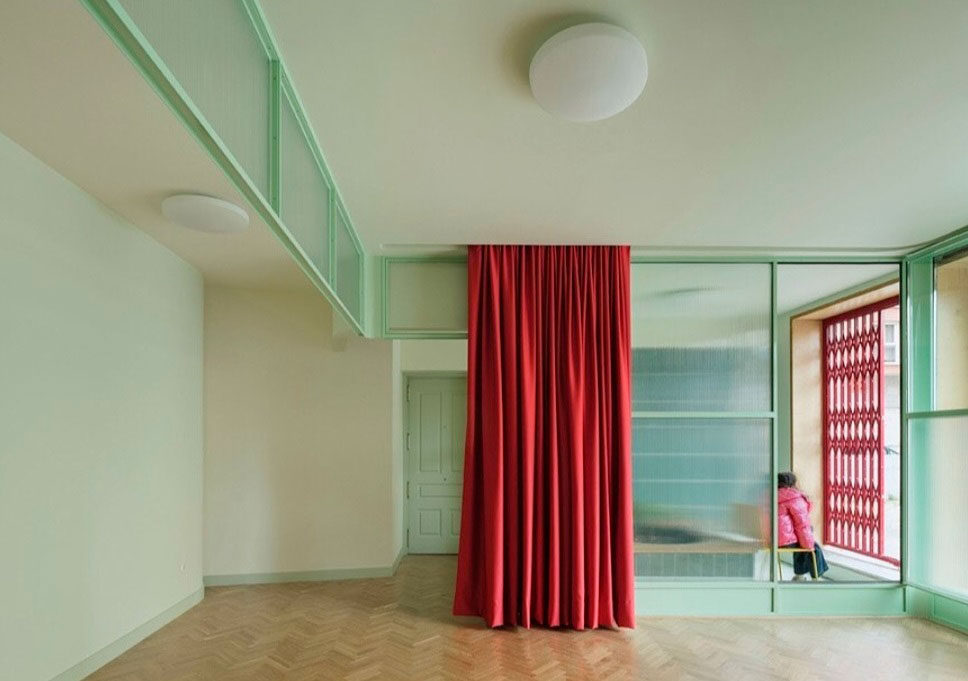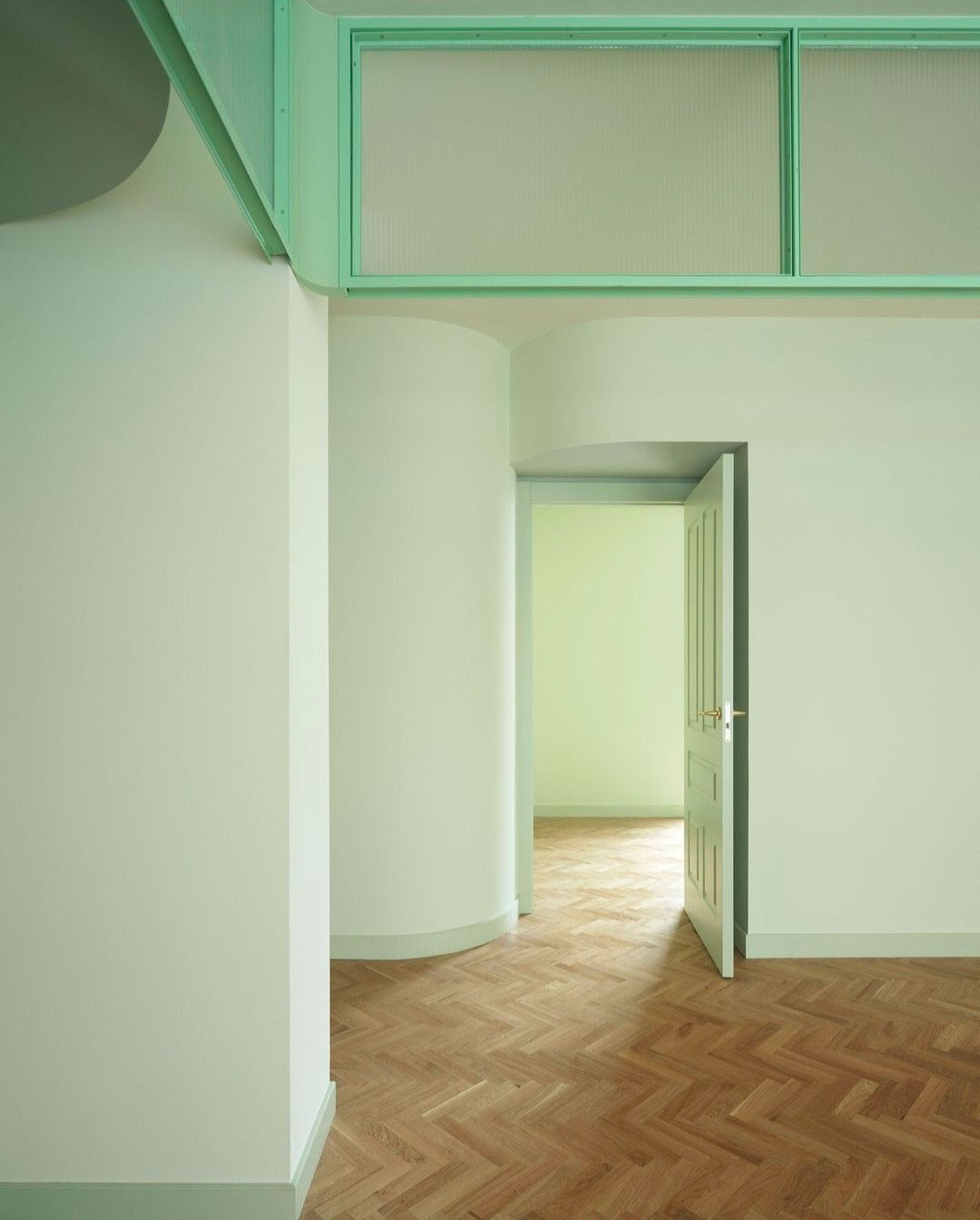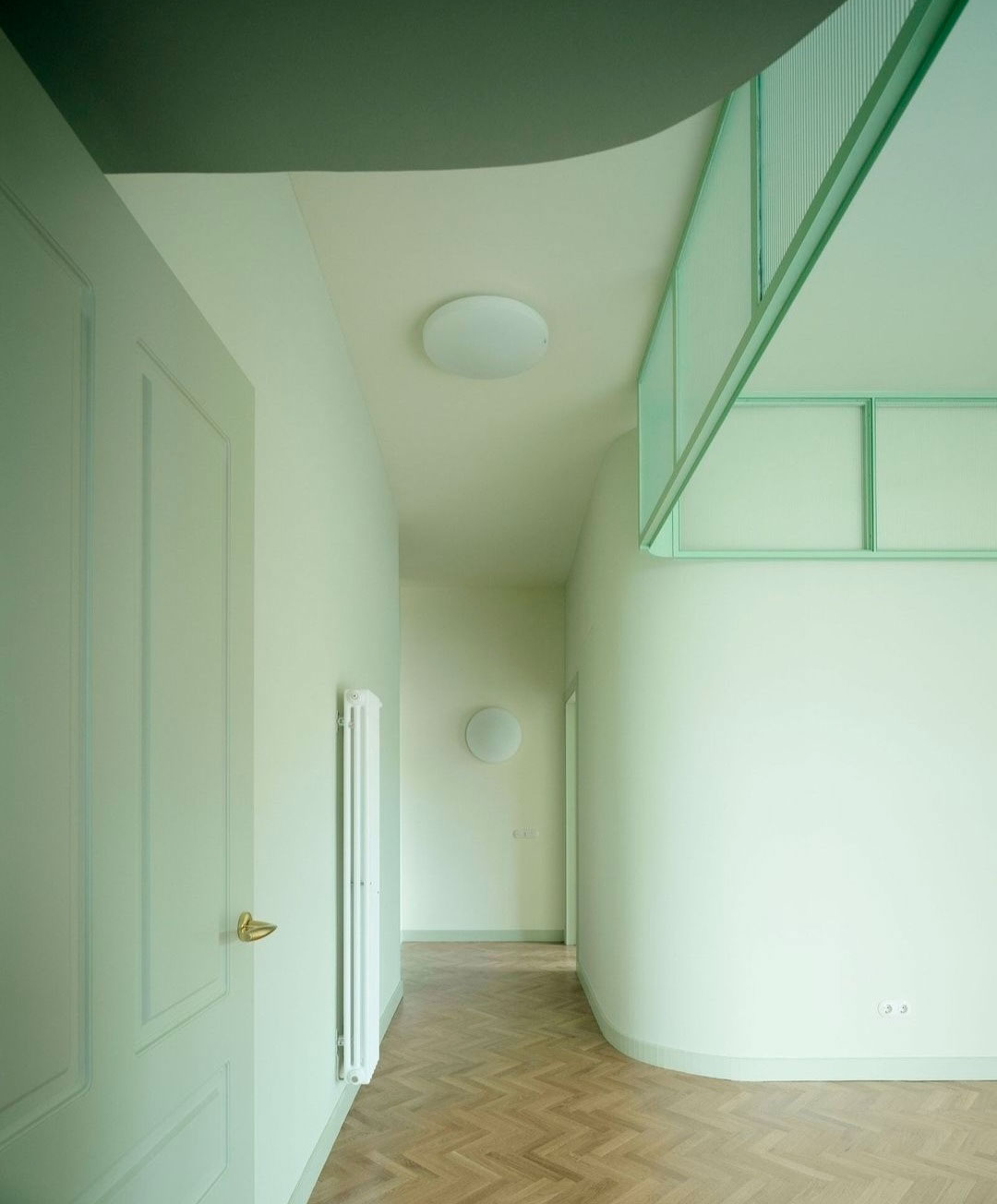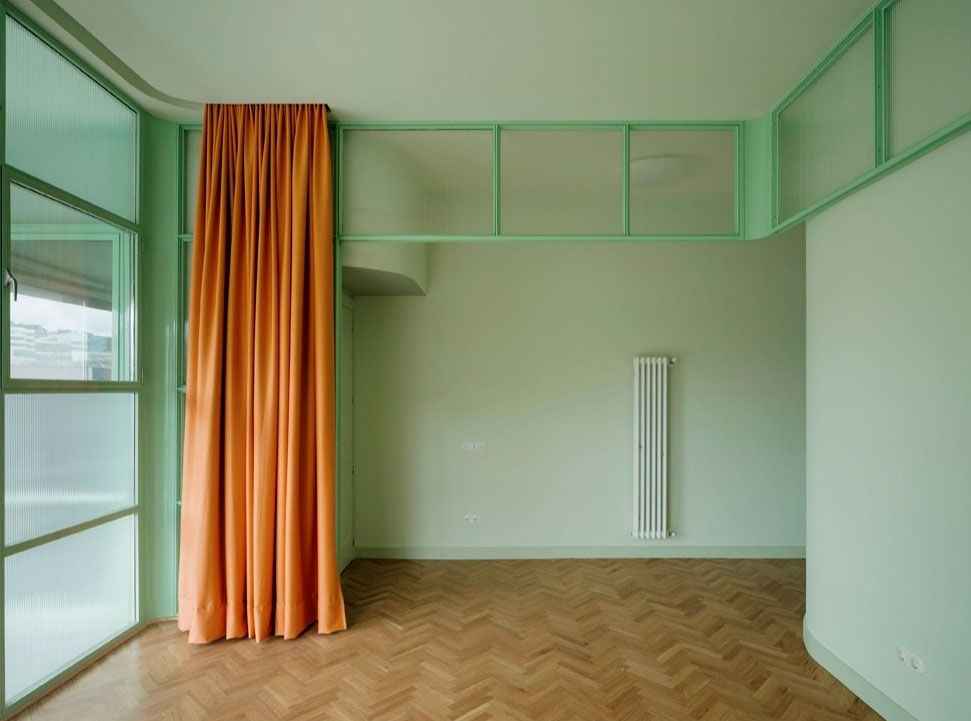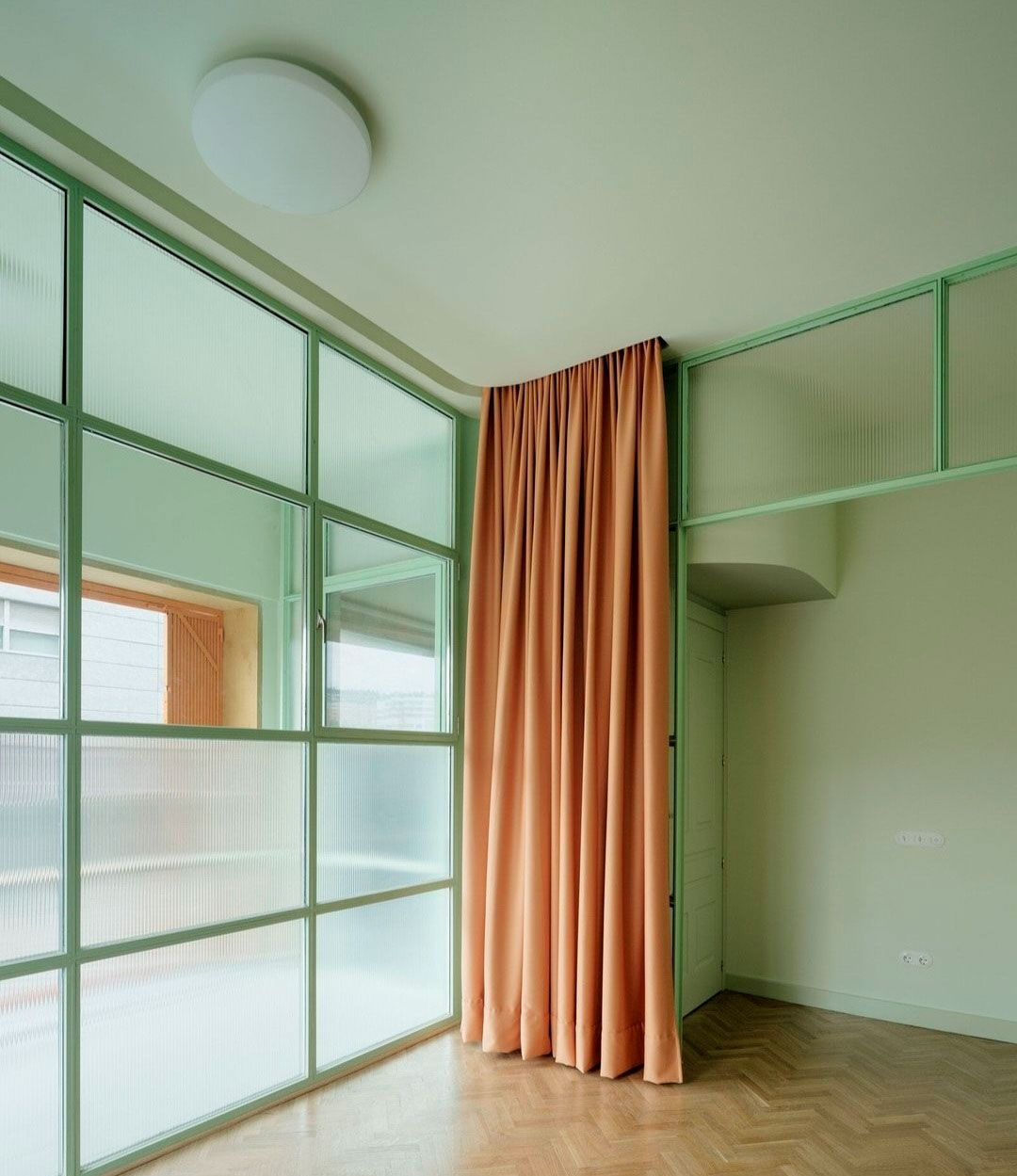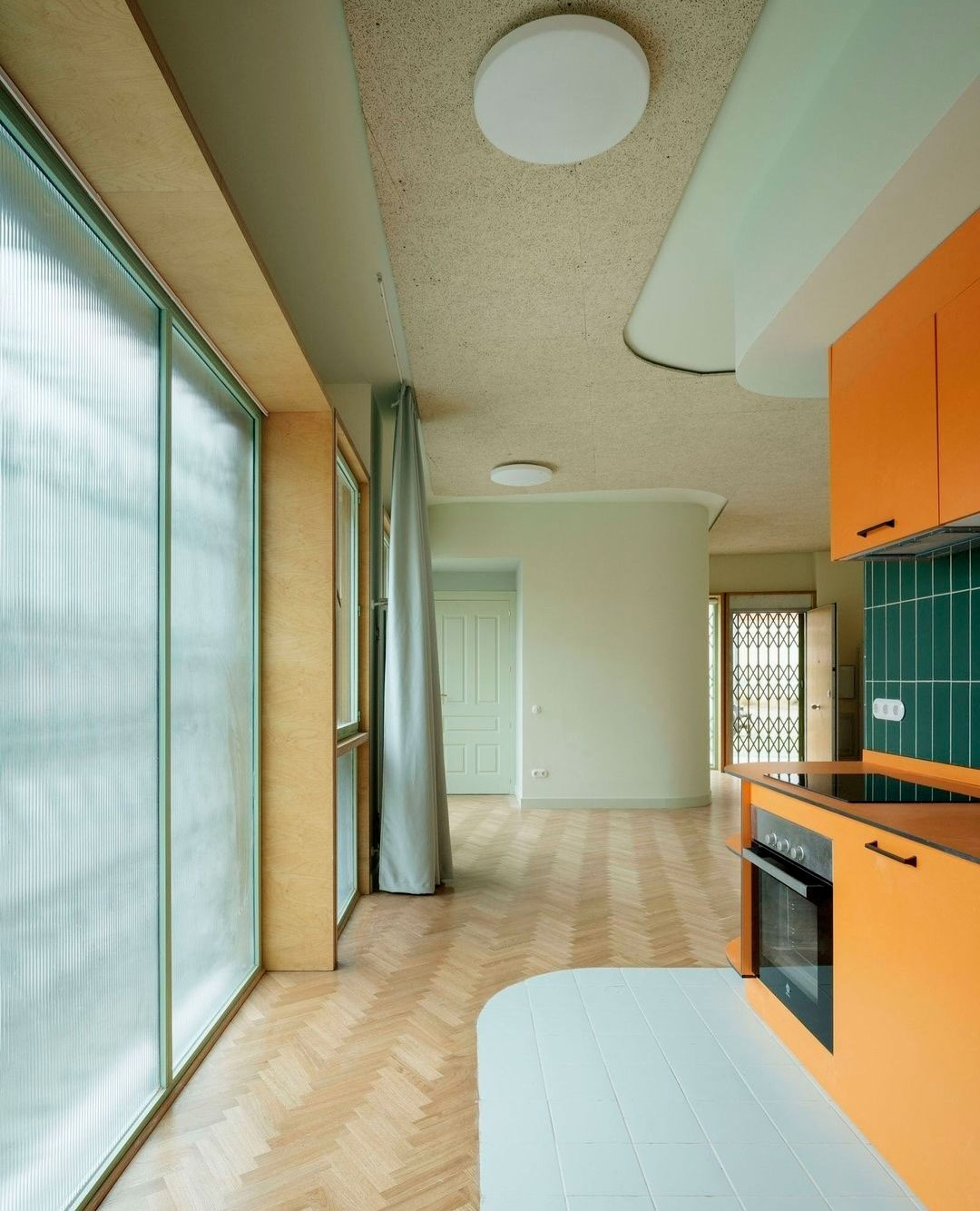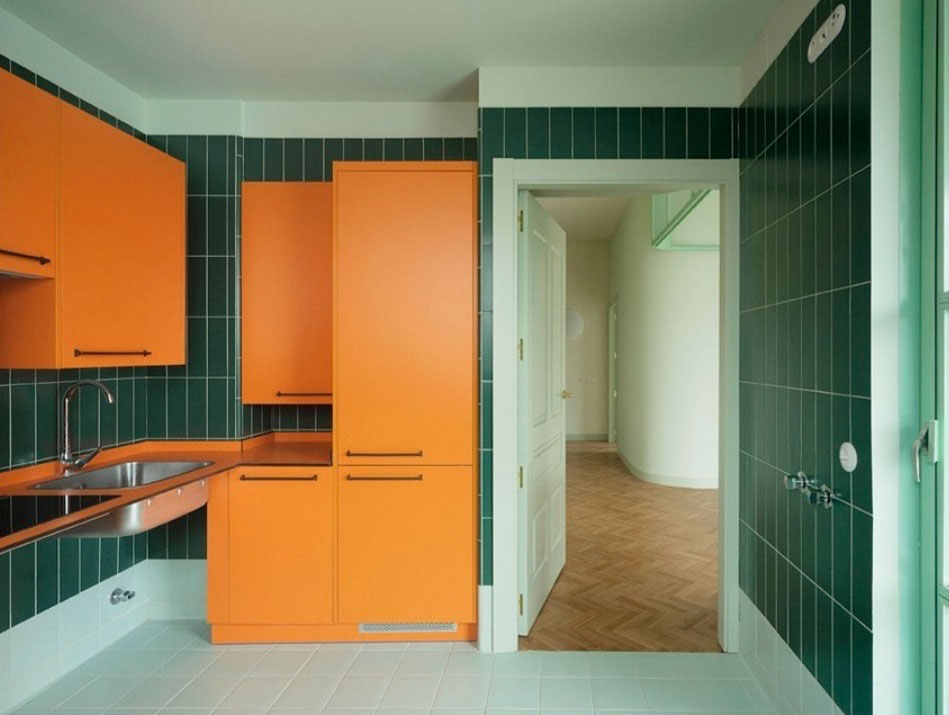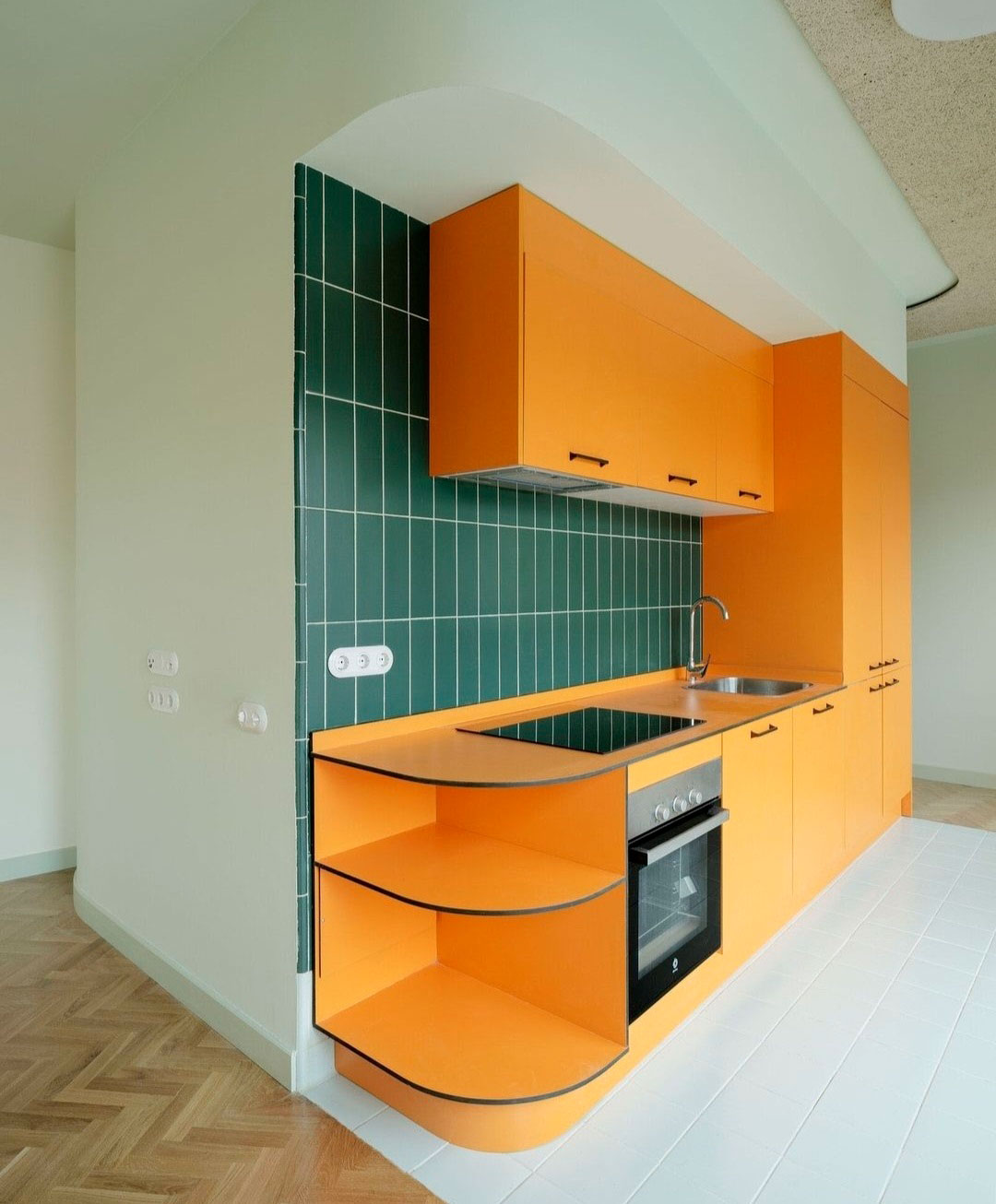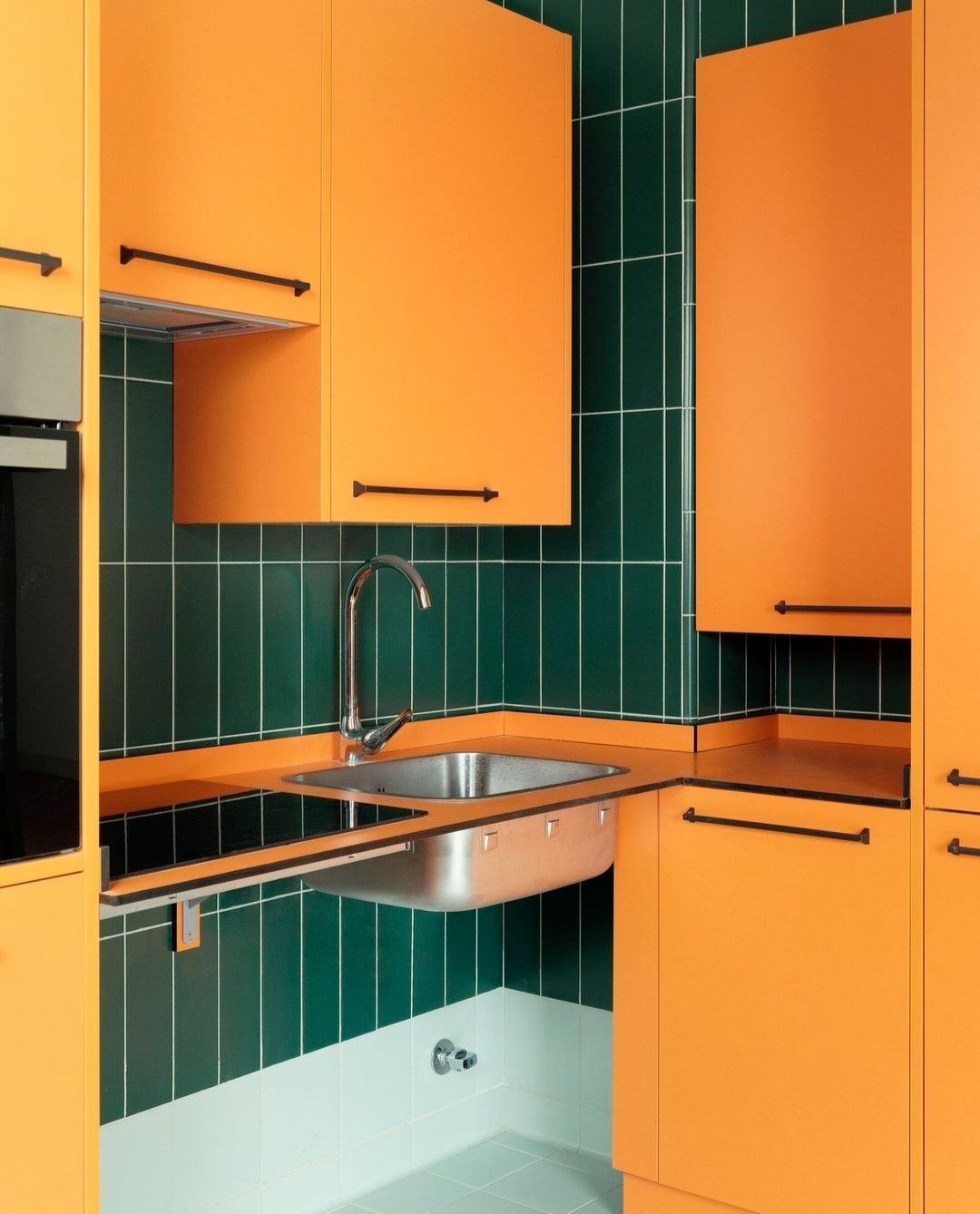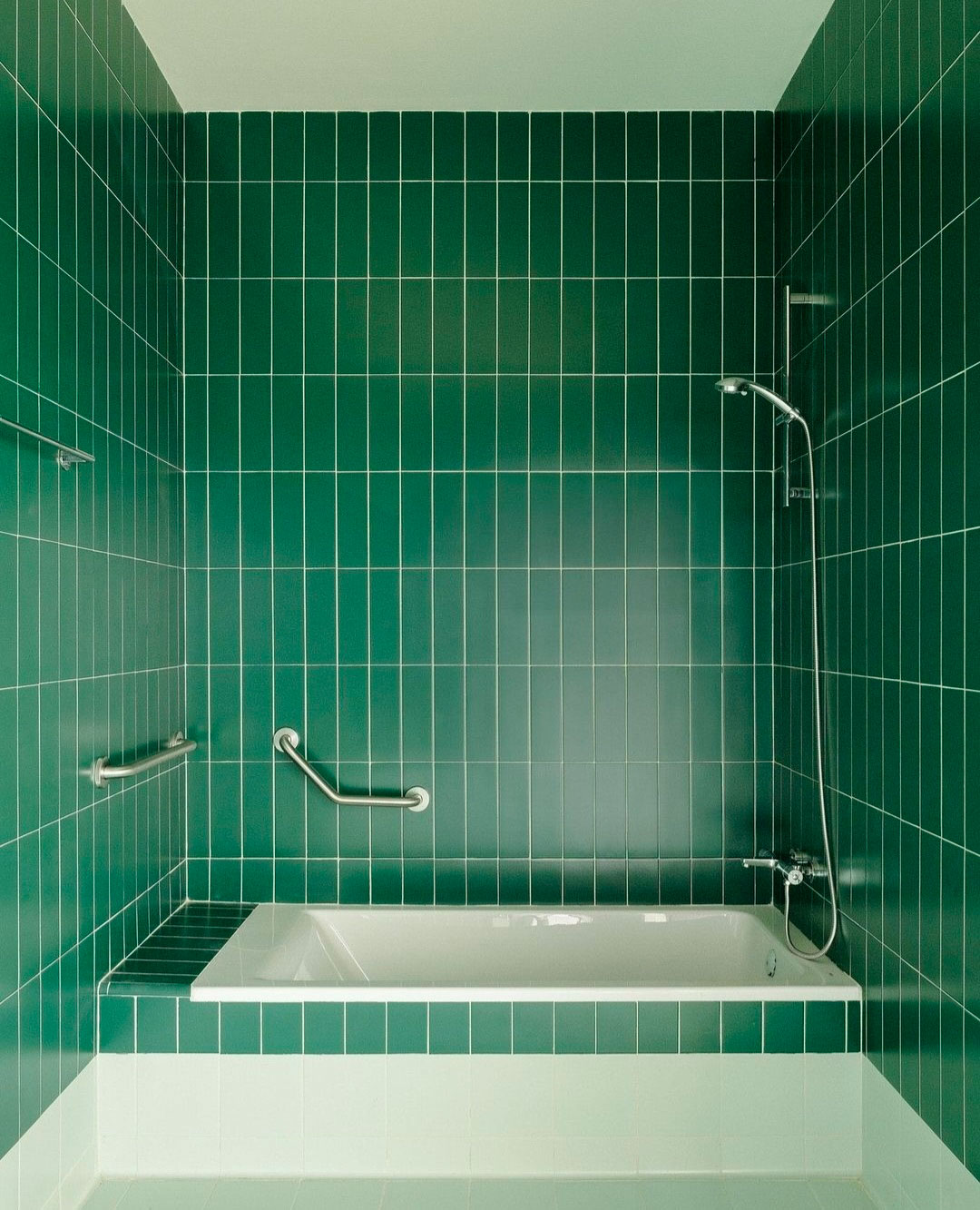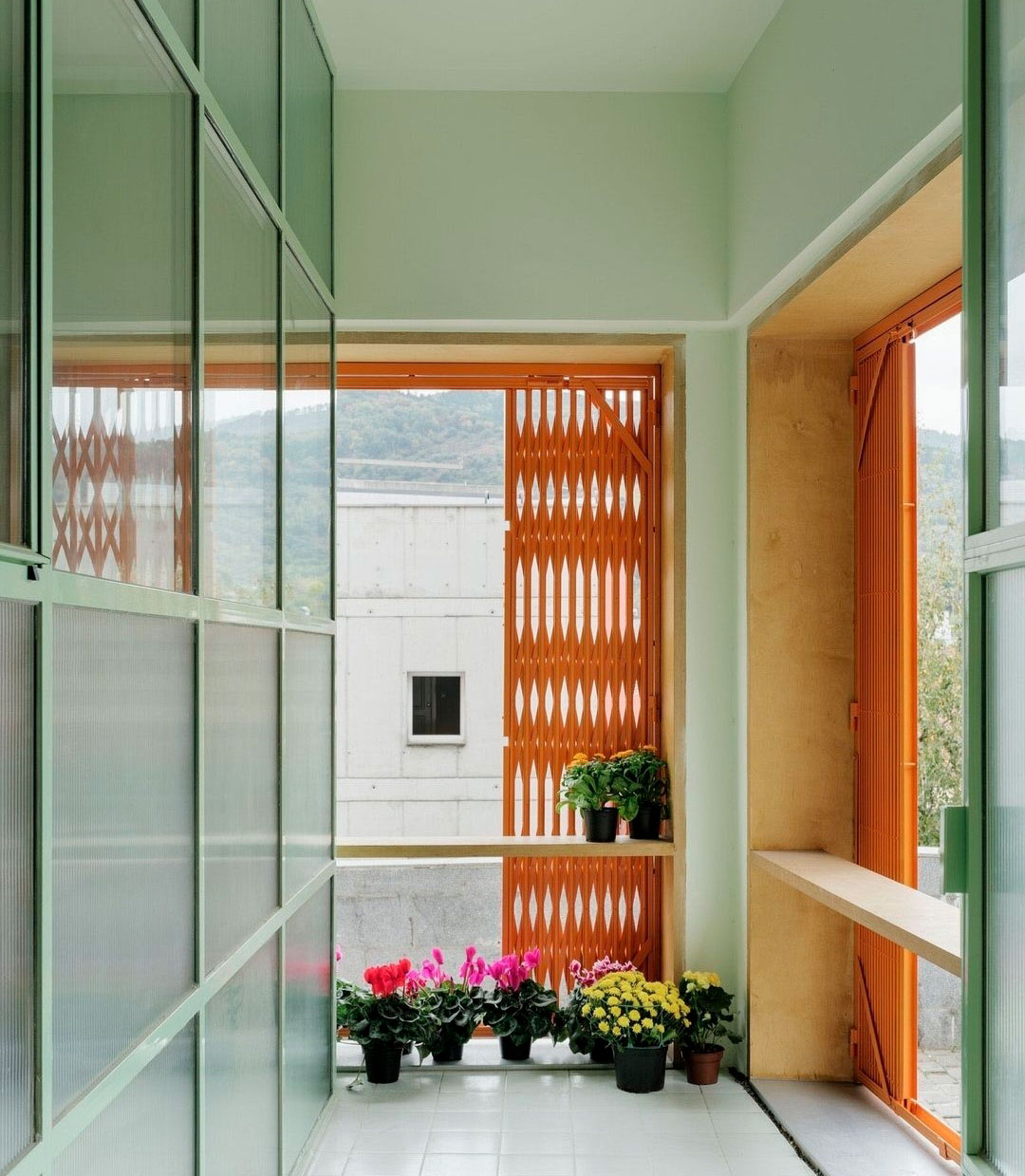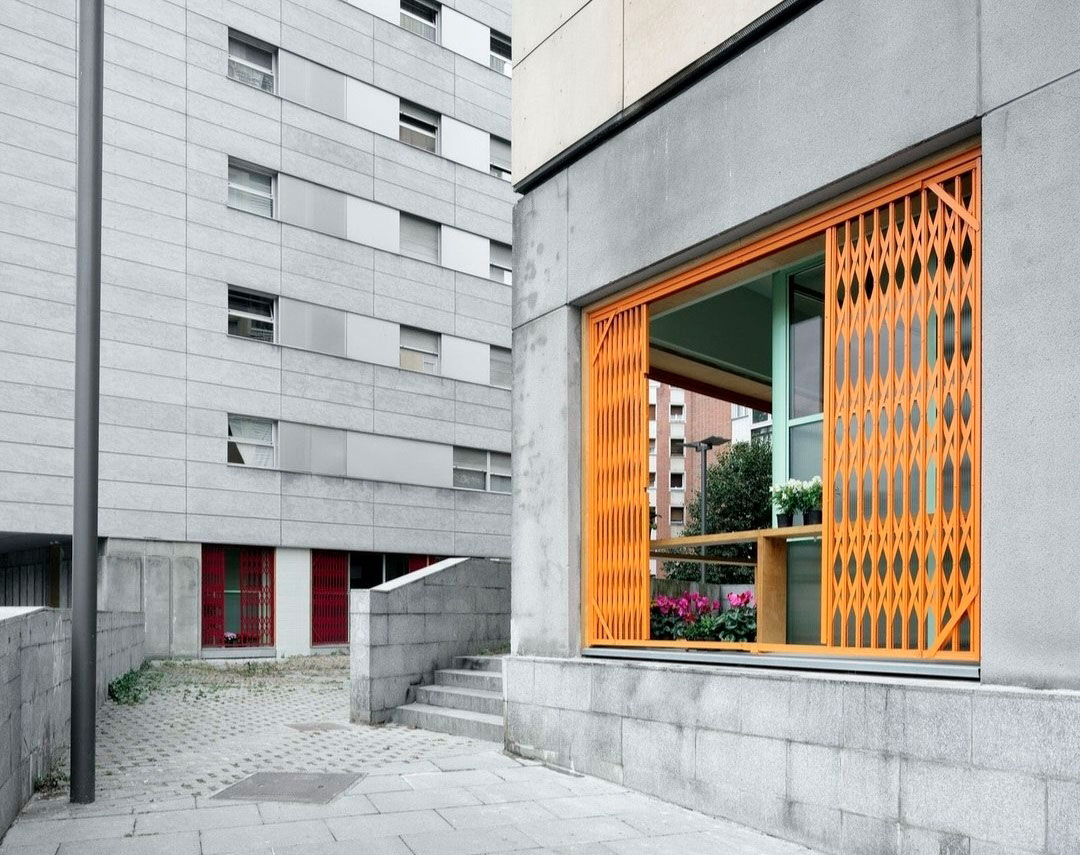UN NUOVO TIPO DI MINIMALISMO
INTERIOR | DAWID KONIECZNY
Il tratto distintivo di questo appartamento situato nel cuore di Varsavia, ridisegnato di recente da Dawid Konieczny, è l’uso totale del beige.
La tonalità è soft come le forme che si susseguono nello spazio, ma la scelta di uniformarlo cromaticamente appare molto coraggiosa. Quel colore pervade ogni tipo di componente e di superficie. Anzi, per sottolineare ulteriormente quella rigida coerenza, molti mobili su misura sono stati rivestiti di intonaco e dipinti con la stessa idropittura delle pareti. Ciò vale anche per il tessile, dal divano dalle forme organiche fino alle lenzuola.
La parete curva che separa la zona giorno dalla camera da letto, a sua volta ritagliata con un’altra linea curva, è il punto focale dell’appartamento.
Le tende di velluto sono una sorta di barriera morbida per l’intimità. Nella camera padronale, la struttura del letto è stata ricoperta da un’impiallacciatura disegnata nel 1982 da Ettore Sottsass per Alpi, caratterizzata dalla stessa tonalità.
Unica trasgressione: il bagno verde.
A new kind of minimalism – The distinctive feature of this apartment located in the heart of Warsaw, recently redesigned by Dawid Konieczny, is the total use of beige.
The tonality is soft like the shapes that follow one another in the space, but the choice to standardize it chromatically appears very courageous. That color pervades every type of component and surface. Indeed, to further underline that rigid coherence, many custom-made pieces of furniture have been plastered and painted with the same water-based paint as the walls. This also applies to textiles, from the sofa with organic shapes to the sheets.
The curved wall that separates the living area from the bedroom, in turn cut out with another curved line, is the focal point of the apartment.
Velvet curtains are a kind of soft barrier to intimacy. In the master bedroom, the bed frame was covered with a veneer designed in 1982 by Ettore Sottsass for Alpi, characterized by the same shade.
The only transgression: the green bathroom.

